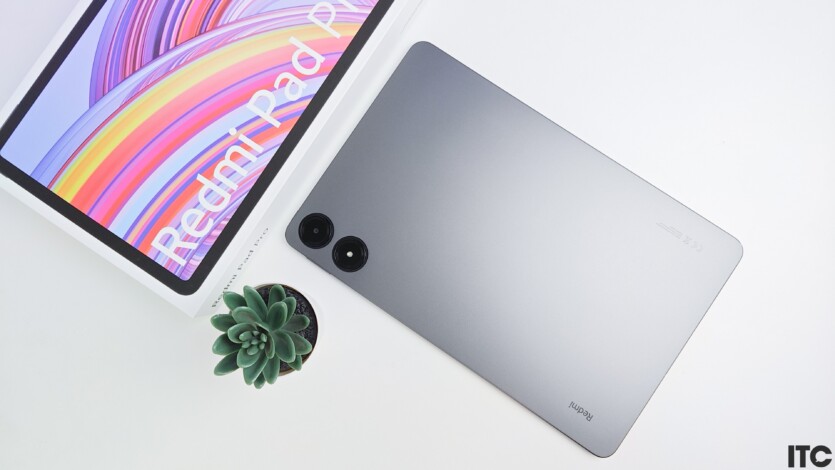
Redmi is known not only for its affordable and mid-range smartphones. The brand also has some good tablets, and we just got a chance to review their latest product, the Redmi Pad Pro. I can already say that at an average price, the tablet surprised us with its screen, performance, and usability. Of course, there are some things to criticize, including the clogged proprietary shell, but let’s go in order, so let’s start with the technical specifications, as usual.
Content
Redmi Pad Pro specifications
| Display | 12.1 «, 2560×1600 pixels, 249 ppi, IPS, 120 Hz, HDR10 / Dolby Vision, Gorilla Glass v3 |
| Processor | Snapdragon 7s Gen 2, 8 cores, 4 nm |
| Graphics | Adreno 710 |
| Memory | 6/8 GB LPDDR4X with a frequency of 2133 MHz, 128/256 GB UFS 2.2. |
| Memory card slot | Yes, up to and including 1024 GB |
| Cameras | 8 megapixels main and 8 megapixels front, 1080p/30 fps, autofocus, digital stabilization |
| Sound | Stereo speakers (4 pcs.) with Dolby Atmos and Hi-Res support |
| Ports and connectors | USB-C, 3.5 mm |
| Network and communications | Wi-Fi 6 (802.11 a/b/g/n/a/ac), Bluetooth 5.2 |
| NFC | No |
| Battery | 10,000 mAh, 33 W fast charging |
| OS version | Android 14, HyperOS shell |
| Availability of a stylus | Yes, you need to buy it separately |
| Case included | No |
| Housing material | Metal |
| Housing protection | No |
| Dimensions | 280×181.85×7.52 mm |
| Weight | 571 grams |
Packaging and equipment
Redmi Pad Pro comes in a medium-sized white box with a large picture of the tablet on the front.
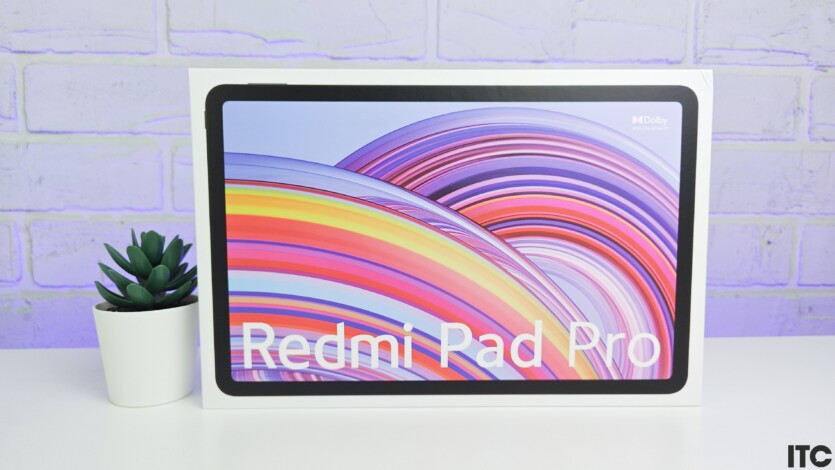
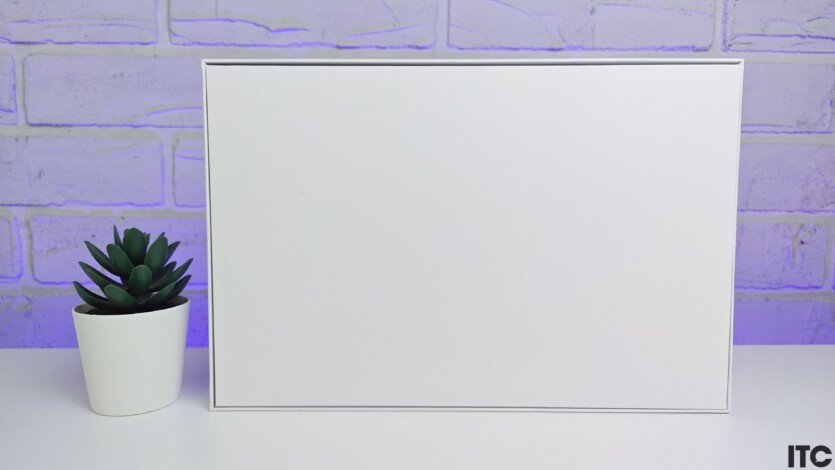
Inside we see the tablet itself without a film, documentation, warranty, and a USB-A to USB-C cable. There is no case, power supply, or stylus included. However, all of this can be purchased separately. For example, the Redmi Pad Pro has a convenient keyboard case and a full-fledged stylus with charging capability.
Design and ergonomics
Redmi Pad Pro is a modern but austere tablet with a metal body. Dimensions of the model are 280×181.85×7.52 mm, weight — 571 grams.
On the front panel, we see relatively thin, uniform bezels for tablets and a tiny front-facing camera built into the side above the screen.
On the back, there’s a main camera on a bulging round platform and another bulging part where the flash is placed. We can also see the Redmi inscription here.
If you hold Redmi Pad Pro horizontally, then on the right side there is a pair of speakers, a USB-C port and a 3.5 mm audio jack. On the left side are two more speakers and a screen lock button. On the top of the case we see volume buttons, a pair of microphones and a memory card slot. The bottom is empty.
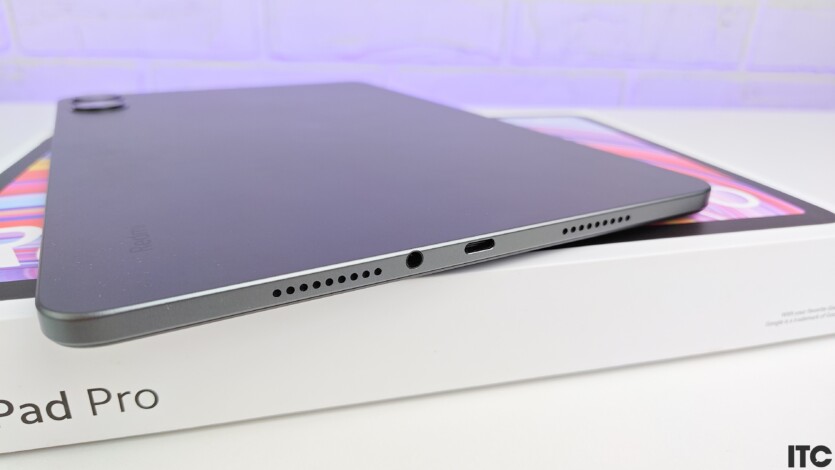
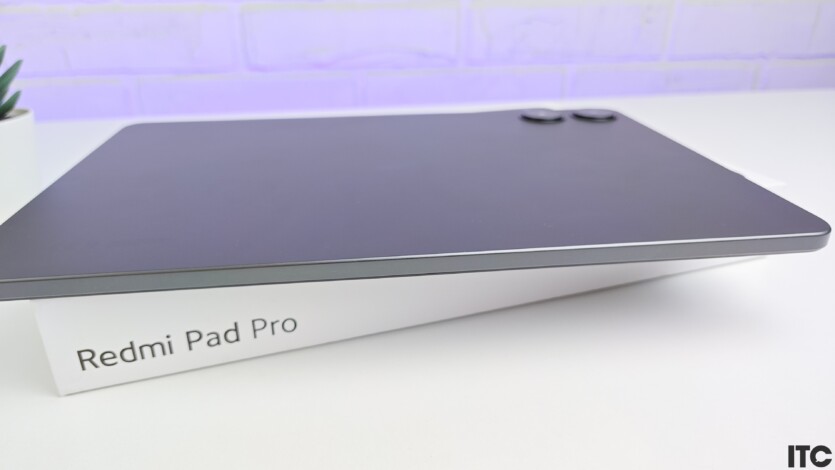
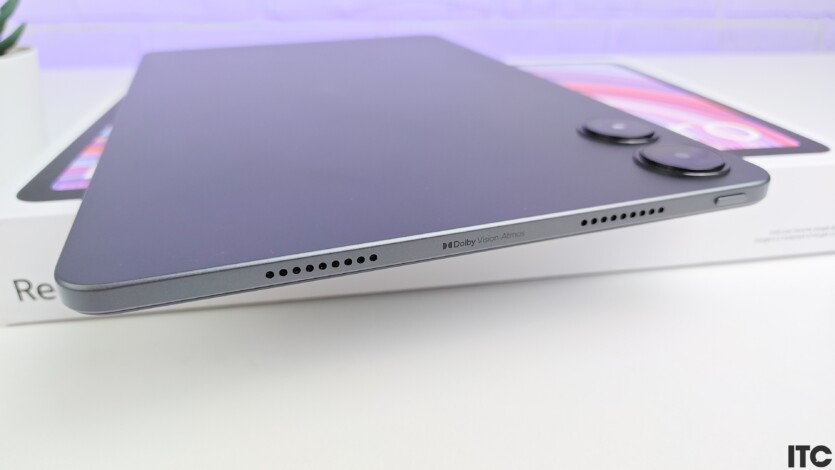
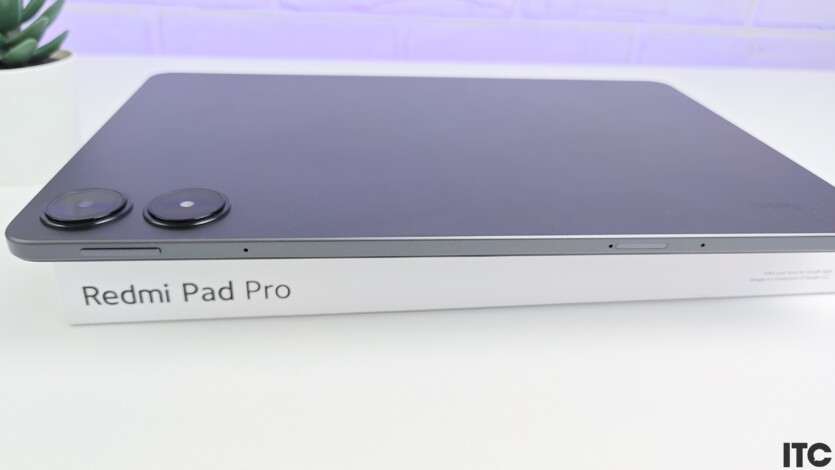
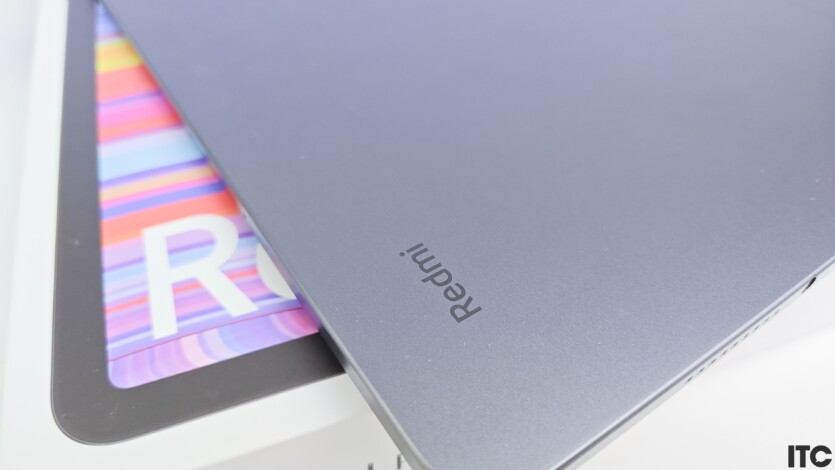
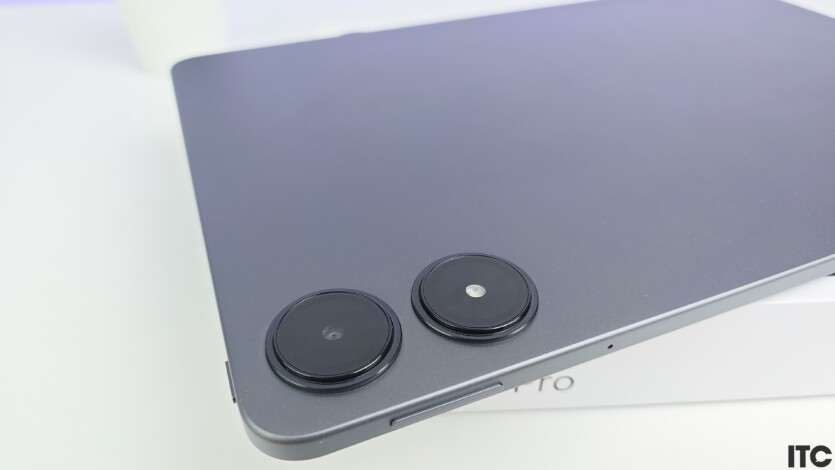
The dark gray metal body shows a lot of dust, but no fingerprints or other signs of use. Also, it will probably get scratched quickly, so after buying it, you should immediately stick a film or glass on it, and buy a case.
The tablet has a large screen but a thin body, so it’s comfortable to hold, and most importantly, not heavy. Of course, it’s better to do it with two hands, but sometimes one hand is fine. It’s also better to use a stand for this form factor.
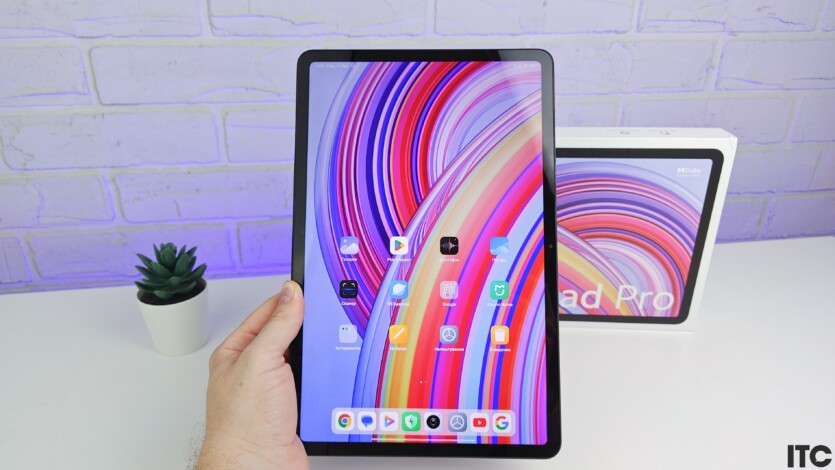
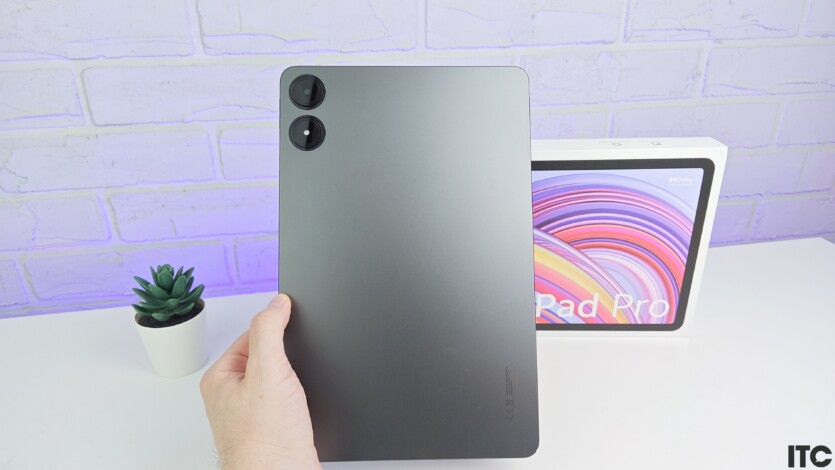

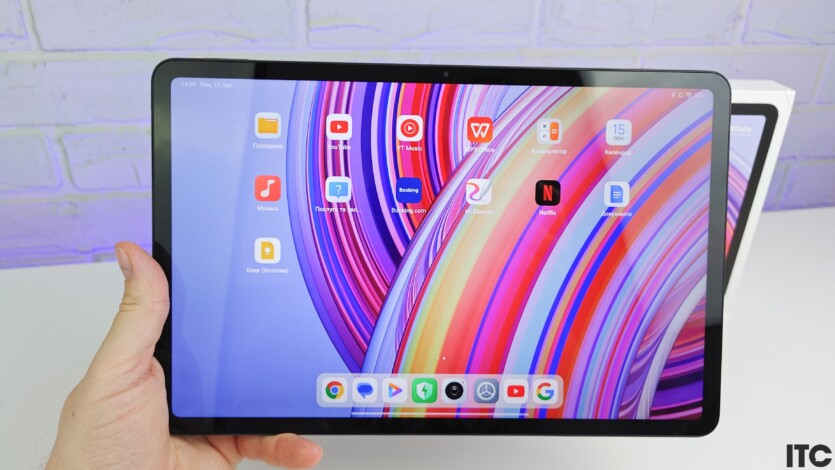
Redmi Pad Pro displays
Redmi Pad Pro is equipped with a 12.1-inch IPS screen with a resolution of 2560 by 1600 pixels and a refresh rate of 120 Hz. The pixel density is 249 ppi. The display supports HDR10 and Dolby Vision, and has Gorilla Glass 3 on top. Maximum brightness is — 500 nits, peak brightness — 600 nits.
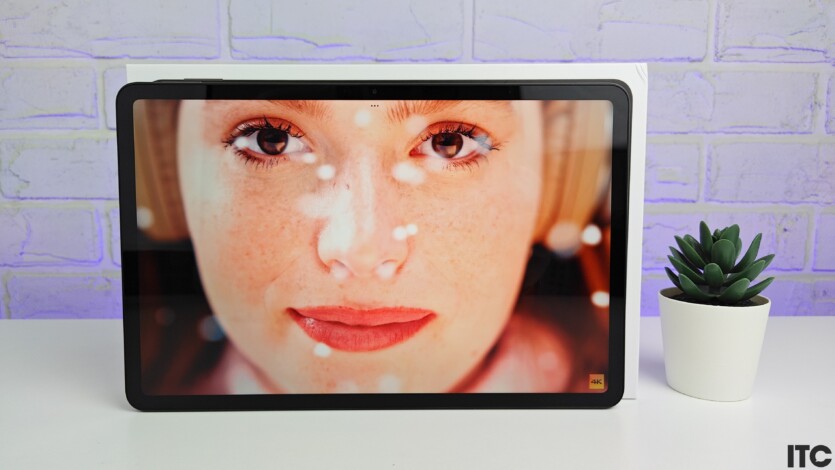
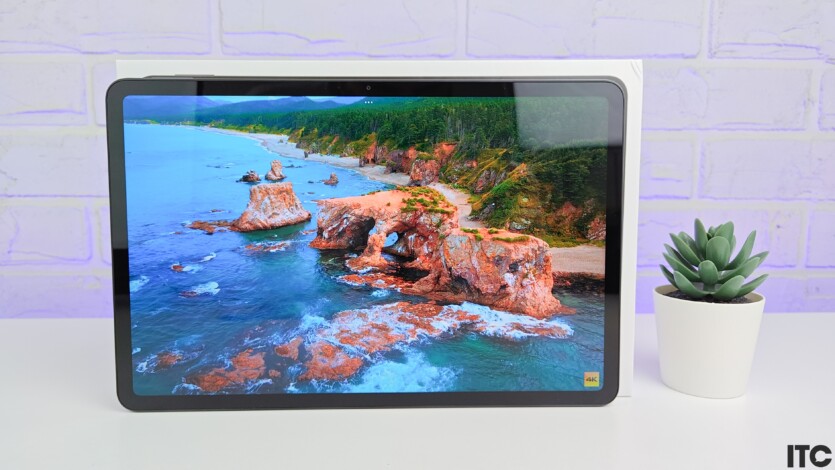
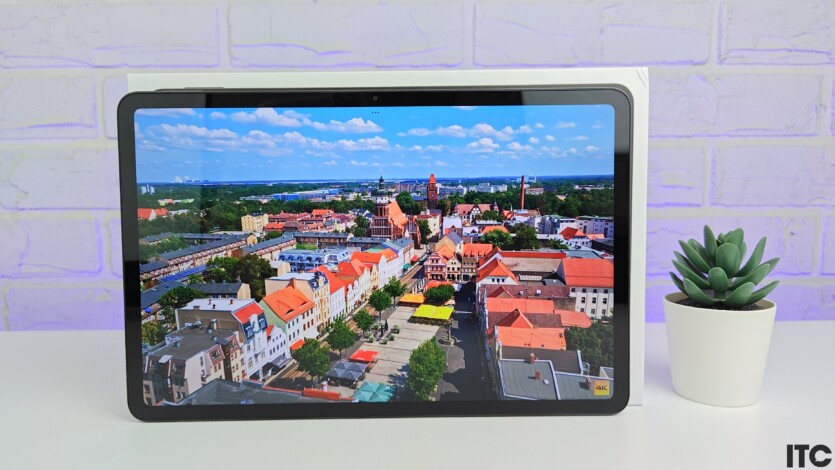
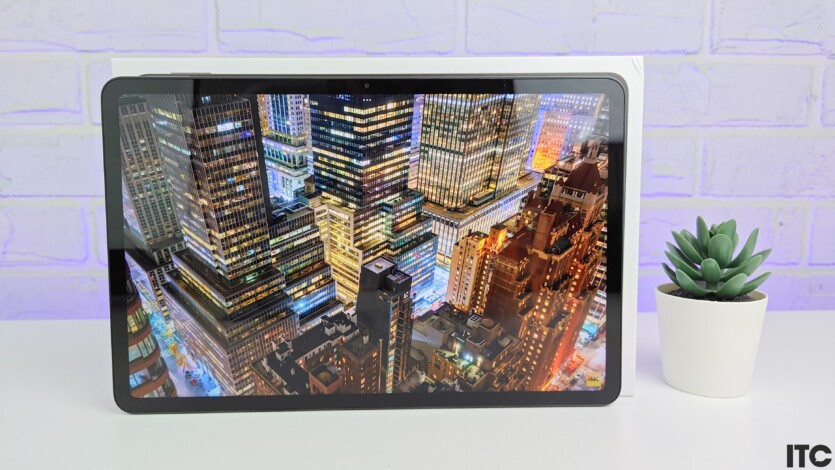

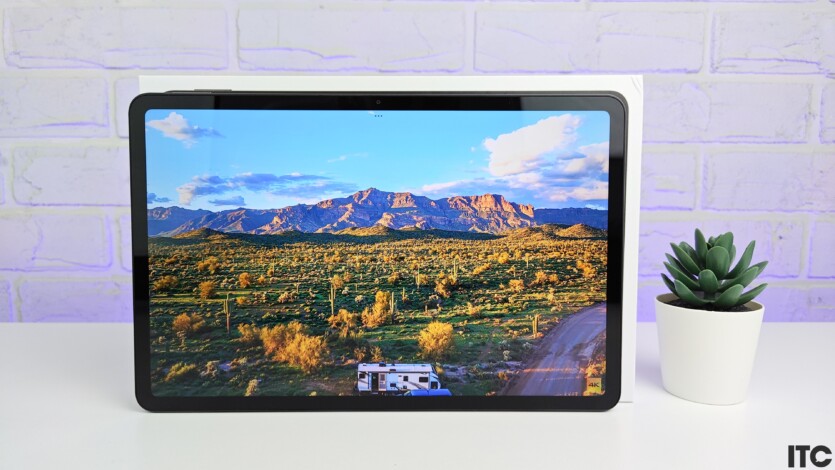
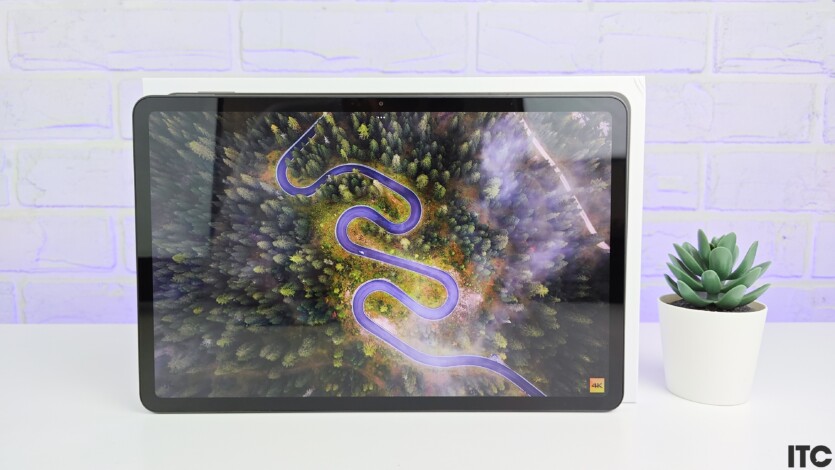
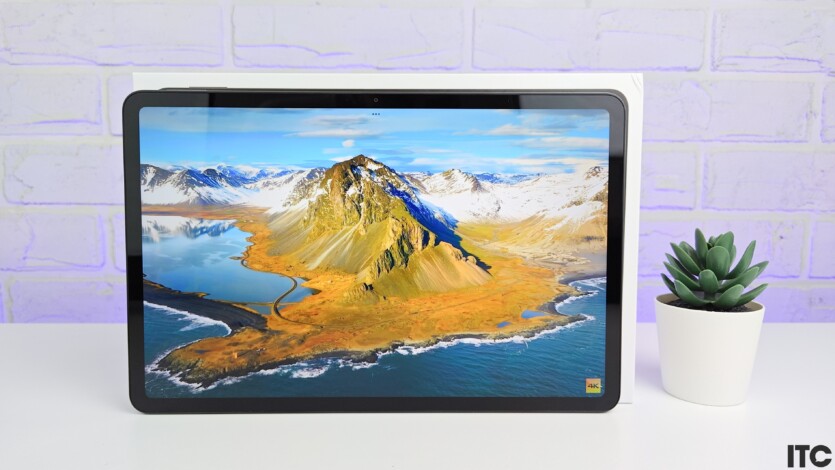
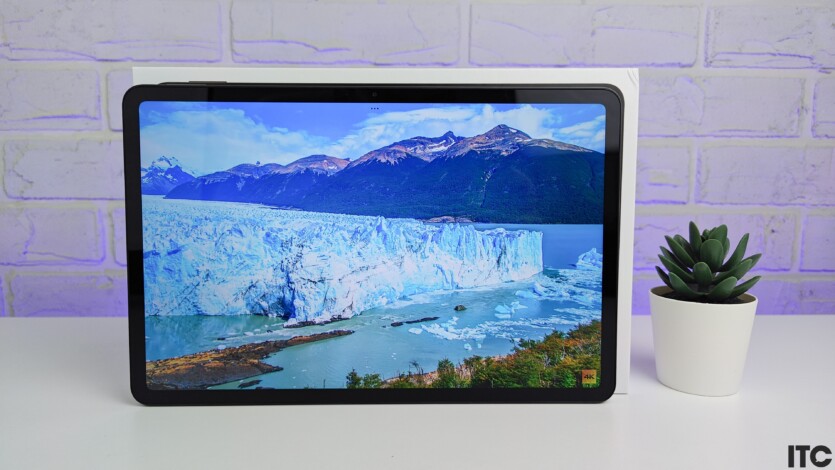
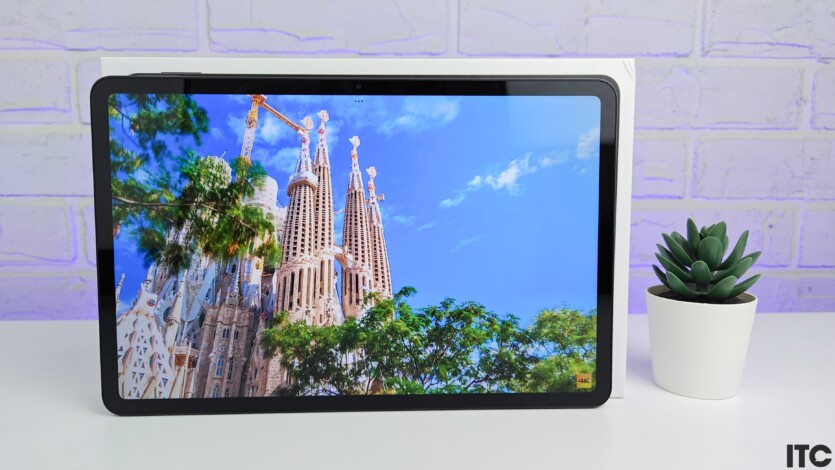


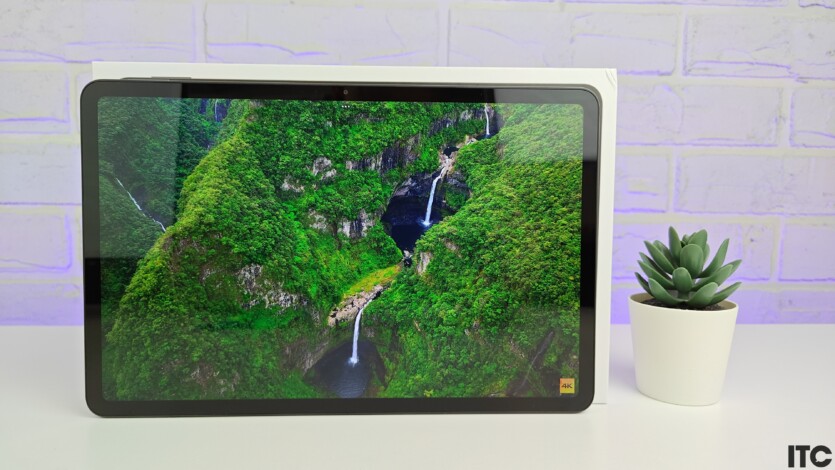
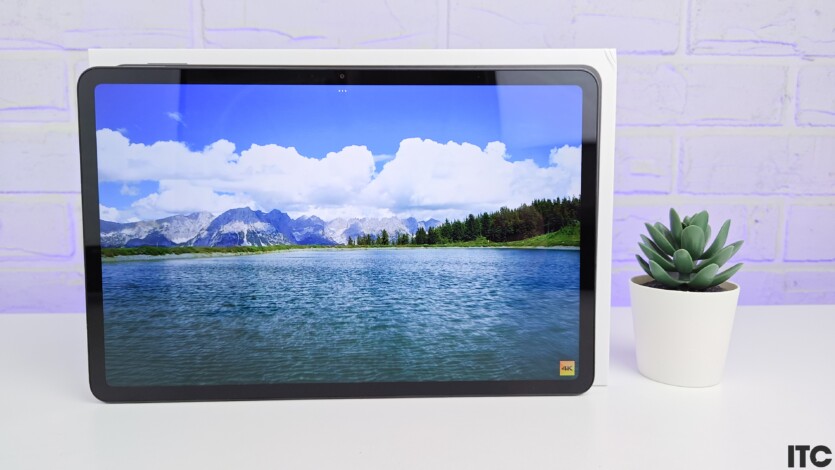
The settings include changing the dark and light theme, day mode (adapts the screen brightness to the ambient light), changing the color scheme (Bright, Standard, Saturated), where I recommend setting the first mode, adaptive colors, reading mode, font settings, and changing the refresh rate (automatic, 60, 90, or 120 Hz).
Even though the image on the screen fades a bit at an angle, the display is one of the outstanding advantages of this tablet. Before looking at the specifications, I first thought that it was AMOLED, but a little later I saw that the black color was not as deep as it should be. I realized that I was looking at a good IPS matrix, which was confirmed by the specifications.
For its segment, it is bright and has rich colors. It also has a good resolution and adequate pixel density. Plus, 600 nits of brightness, HDR and an increased refresh rate add to the experience.
The brightness of the screen is enough for the street, and even more so at home. There were no lags or microfreezes at all, so the impressions are very positive.
Productivity, software, and games
Redmi Pad Pro is powered by a 4-nanometer Qualcomm Snapdragon 7s Gen 2 processor. It has eight cores (four Cortex-A55 at 1.95 GHz and four Cortex-A78 at 2.4 GHz) and a 940 MHz Adreno 710 graphics chip. RAM can be 6 or 8 GB LPDDR4X with a frequency of 2133 MHz. Built-in storage is — 128 or 256 GB UFS 2.2. There is support for memory cards up to and including 1024 GB. Communications are represented by Wi-Fi 6 (802.11 a/b/g/n/a/ac), Bluetooth 5.2. There is no NFC module.
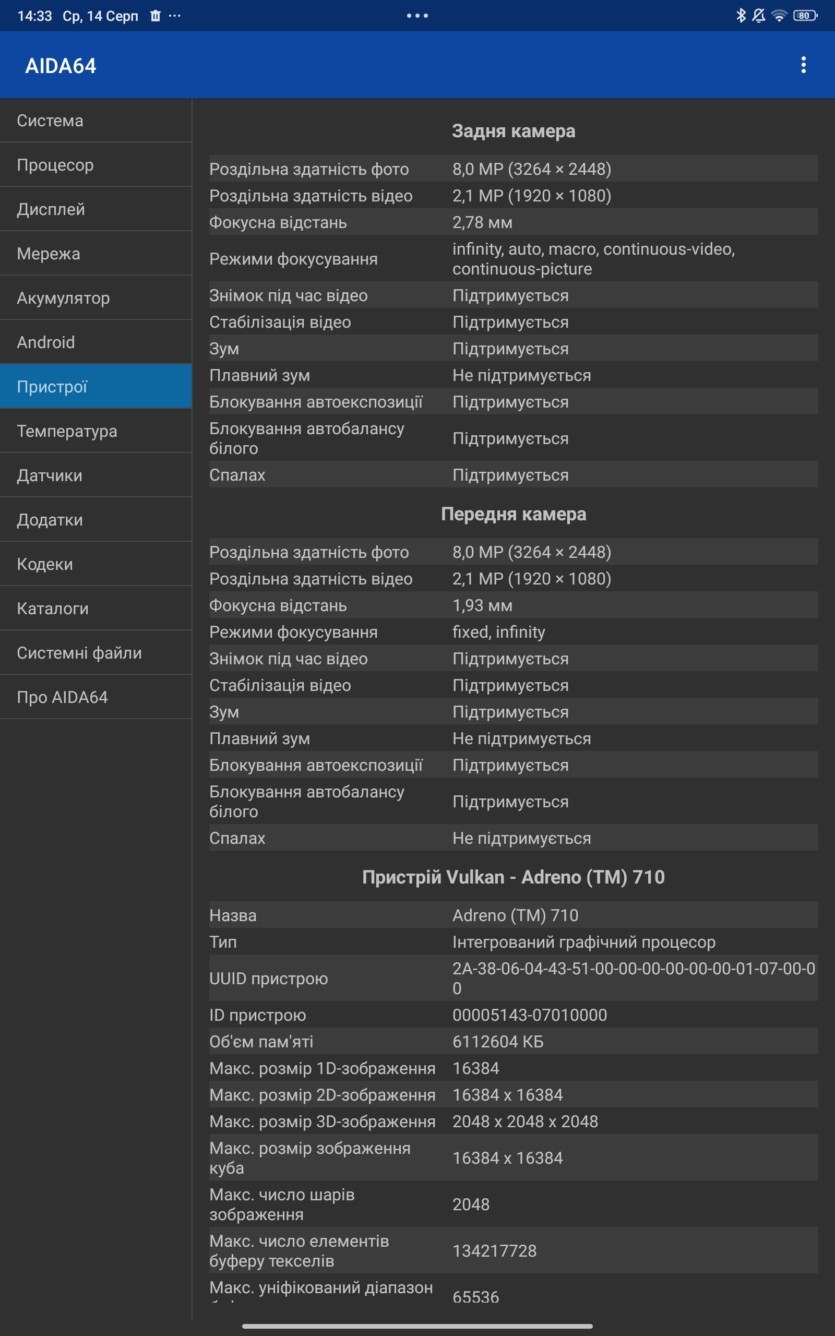
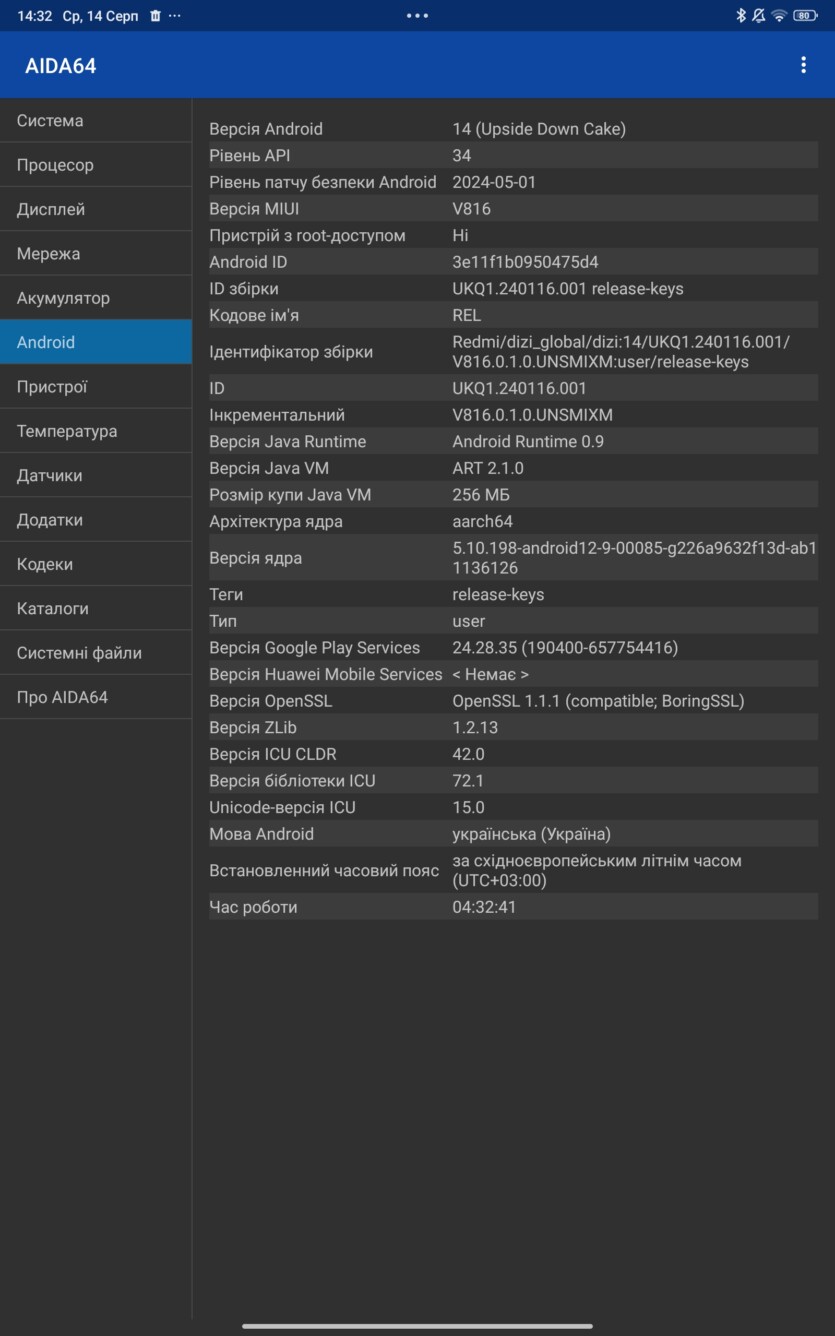
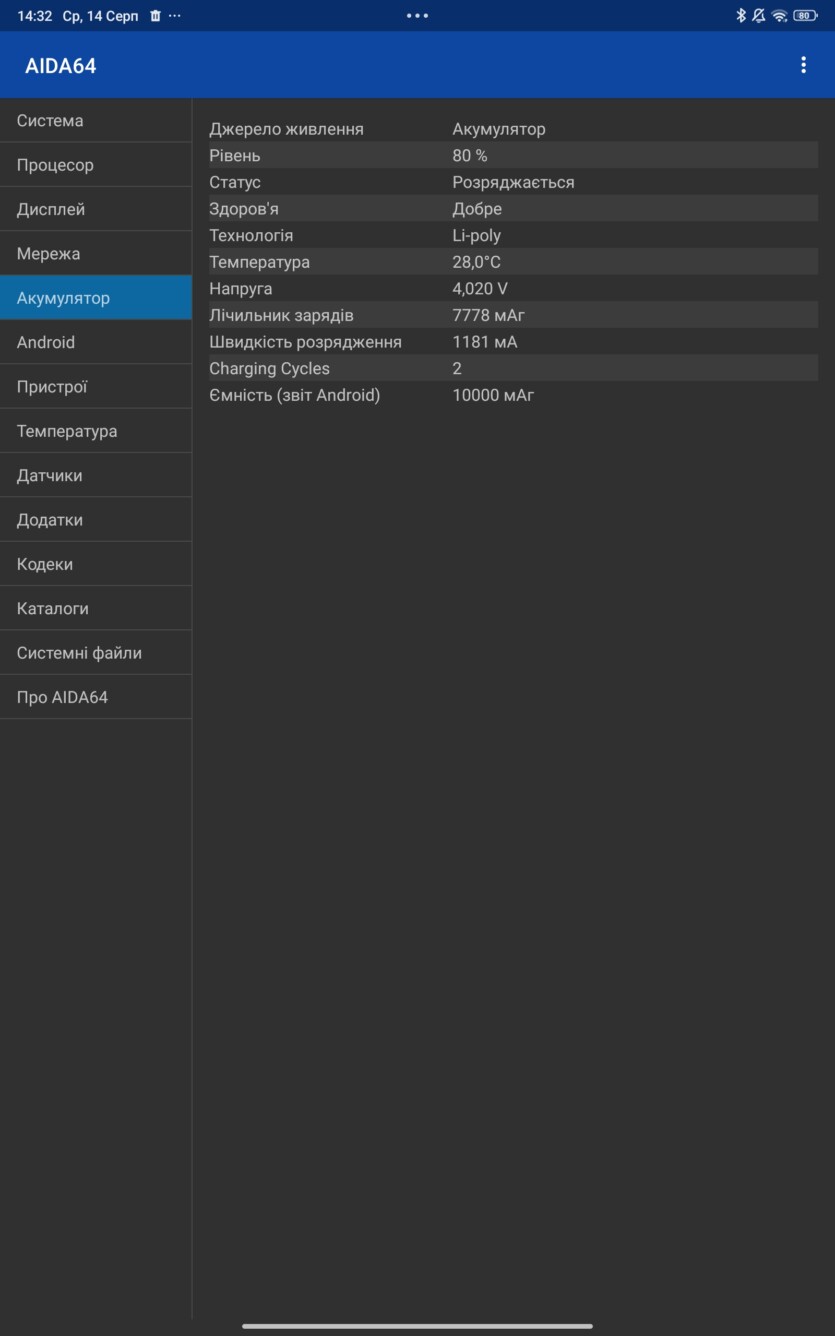
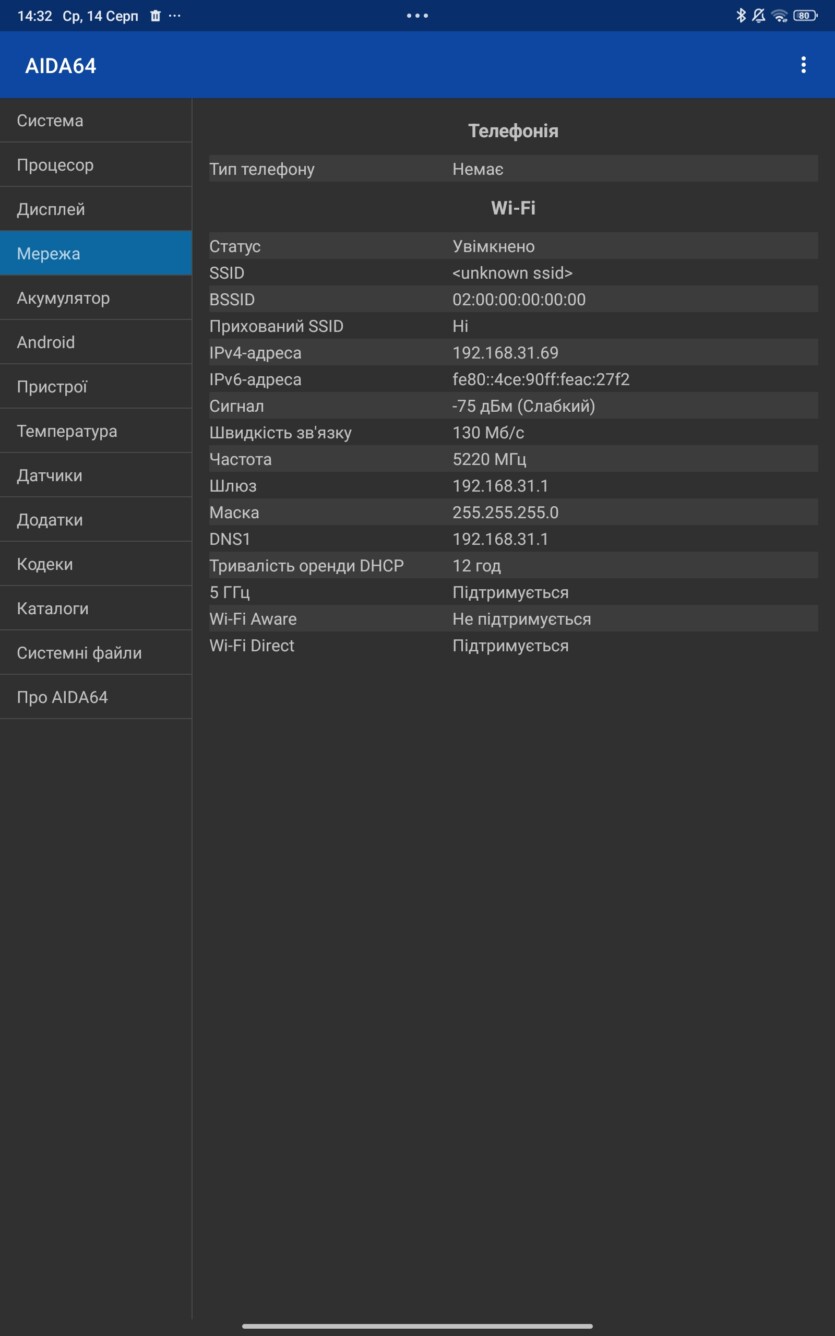
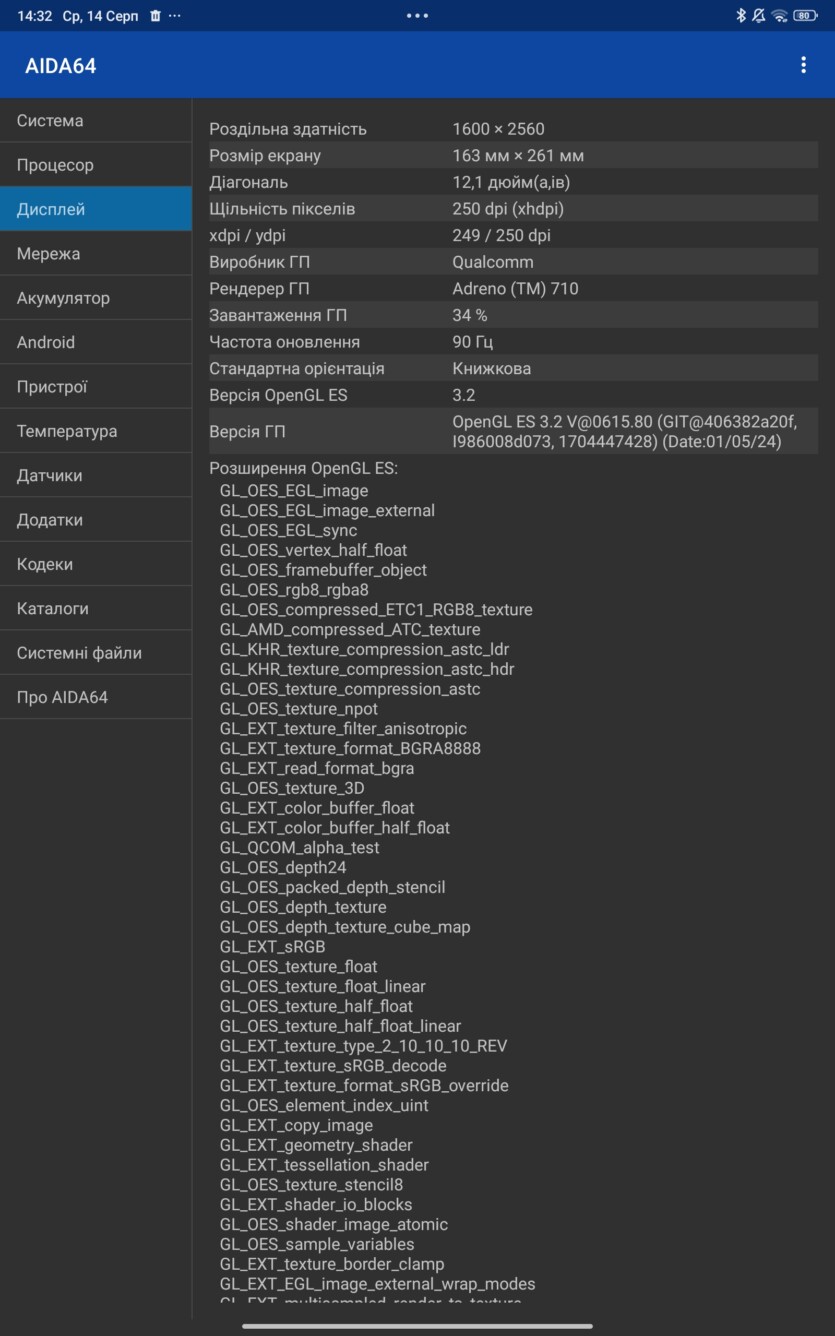
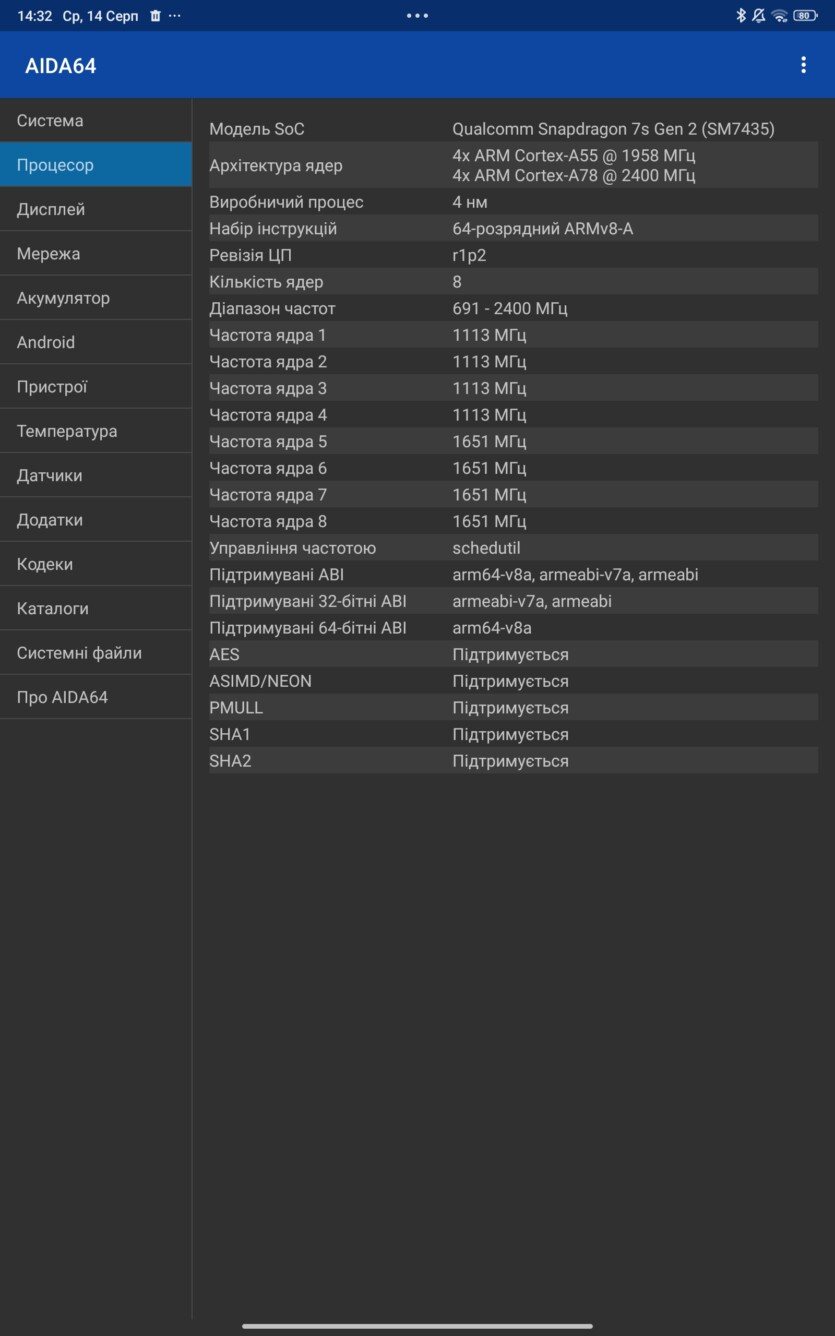
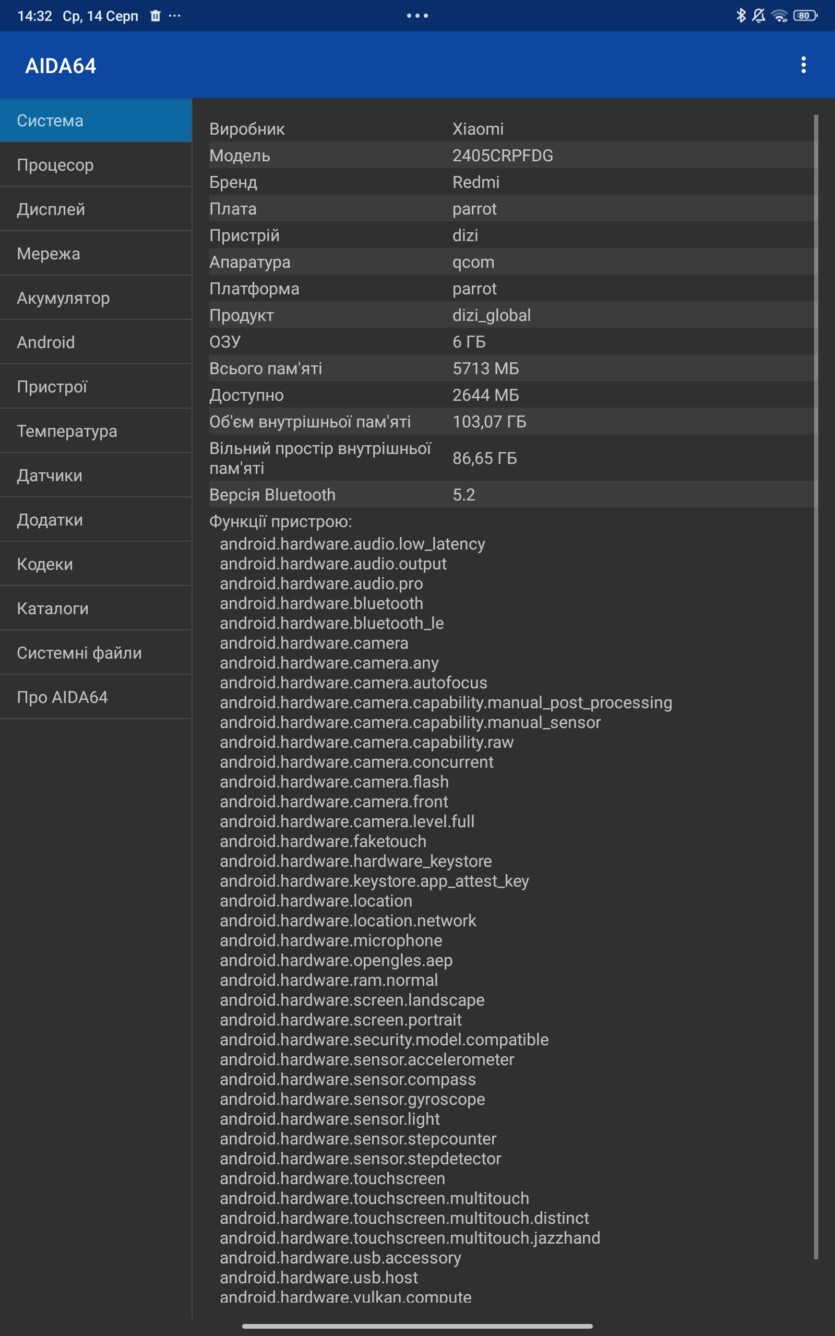
According to the results of various benchmarks and stress tests, we can see that here we have a relatively cold chip of adequate power that will withstand many simultaneously open applications. It will not slow down during use, which was confirmed in practice.
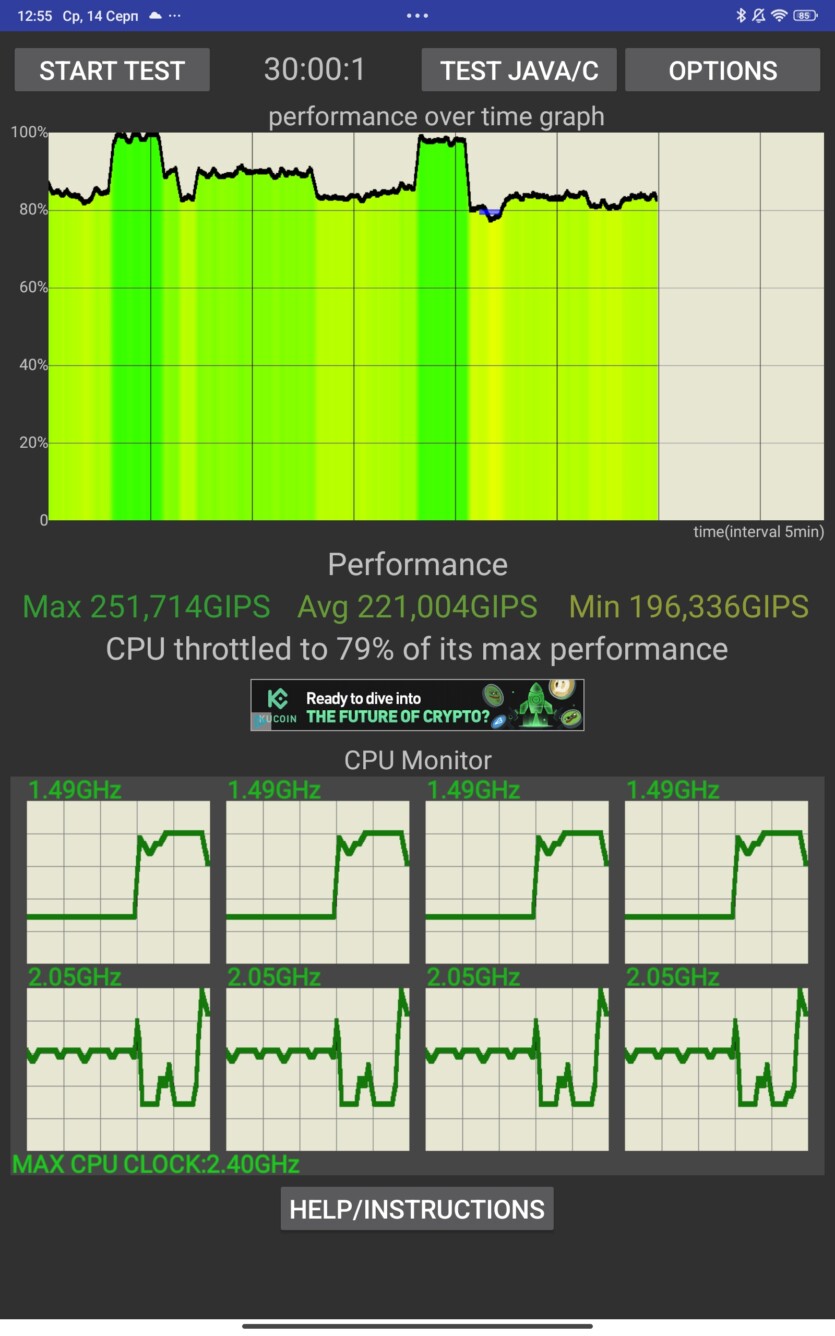
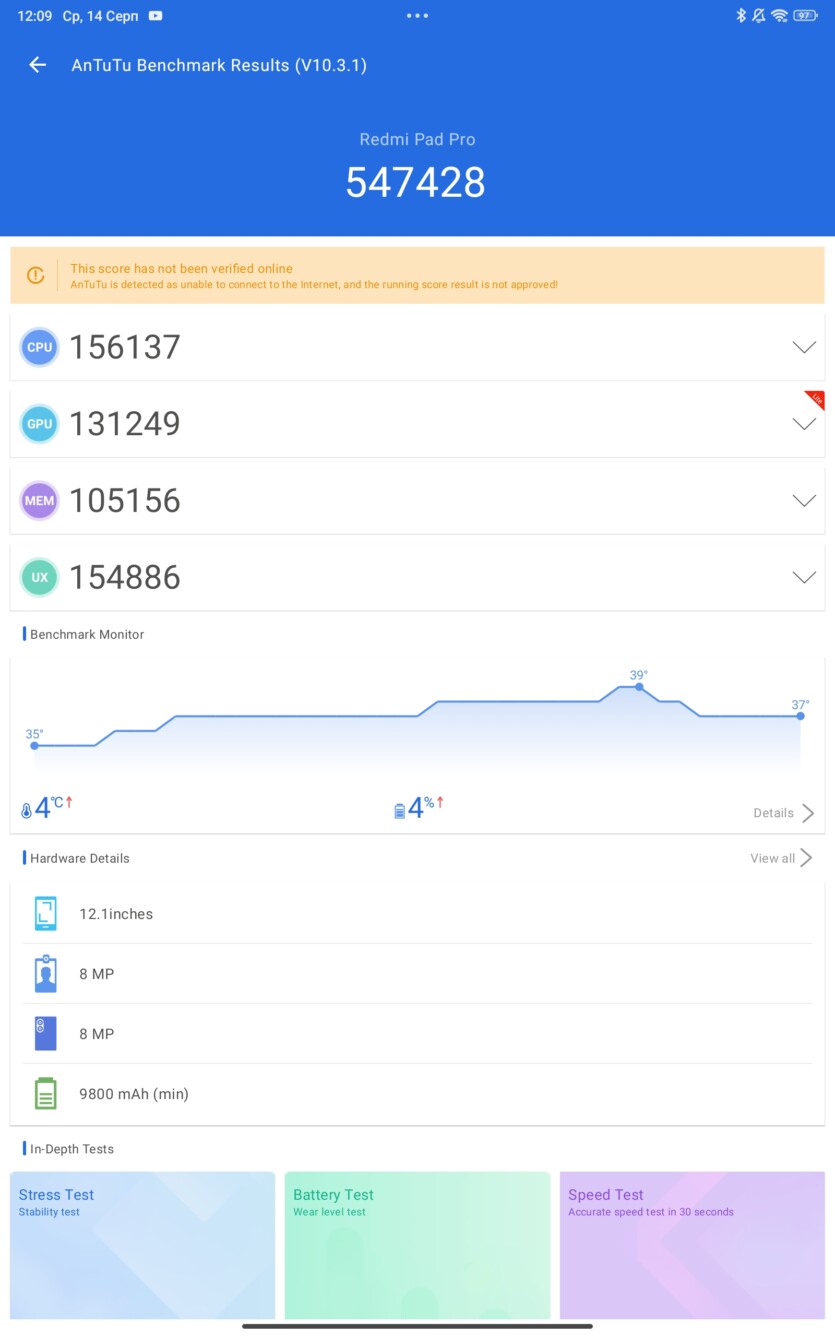
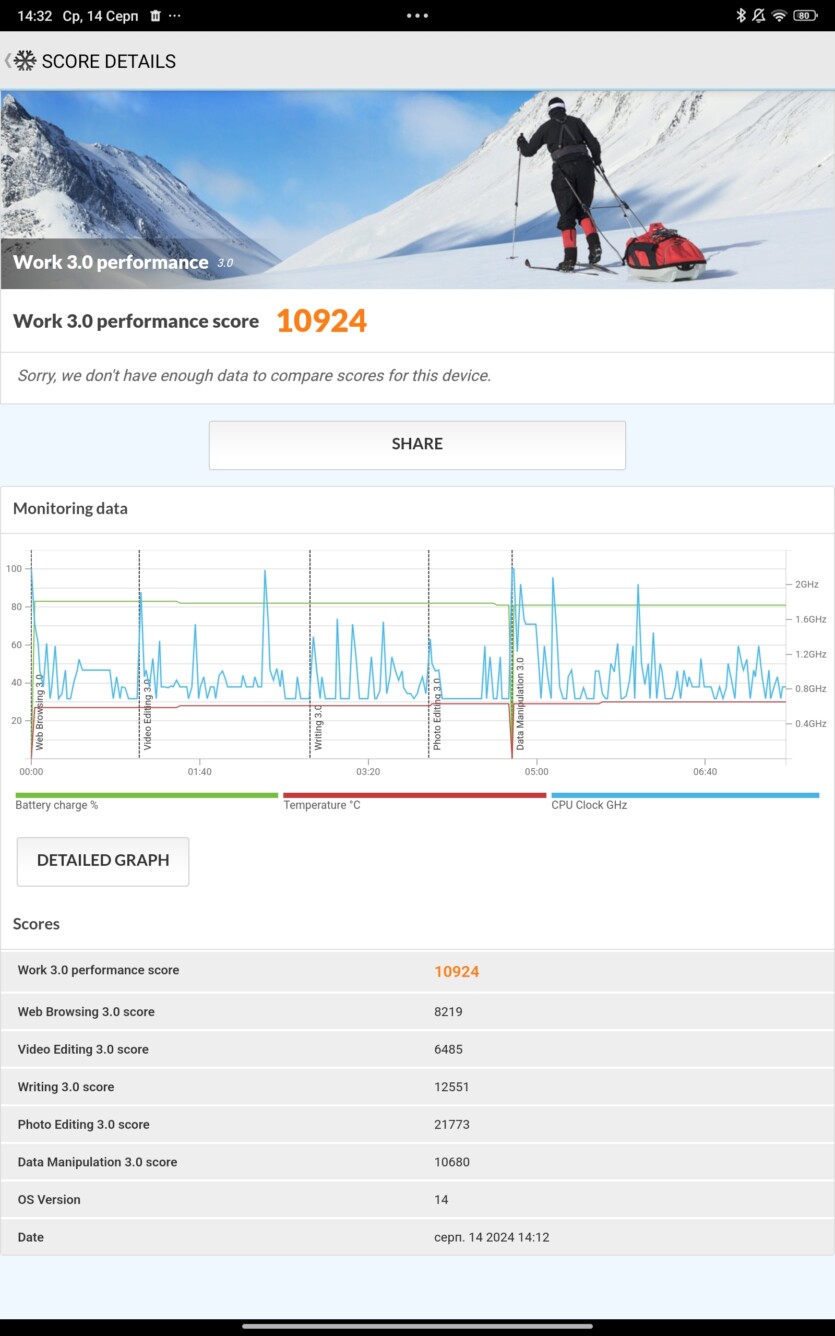
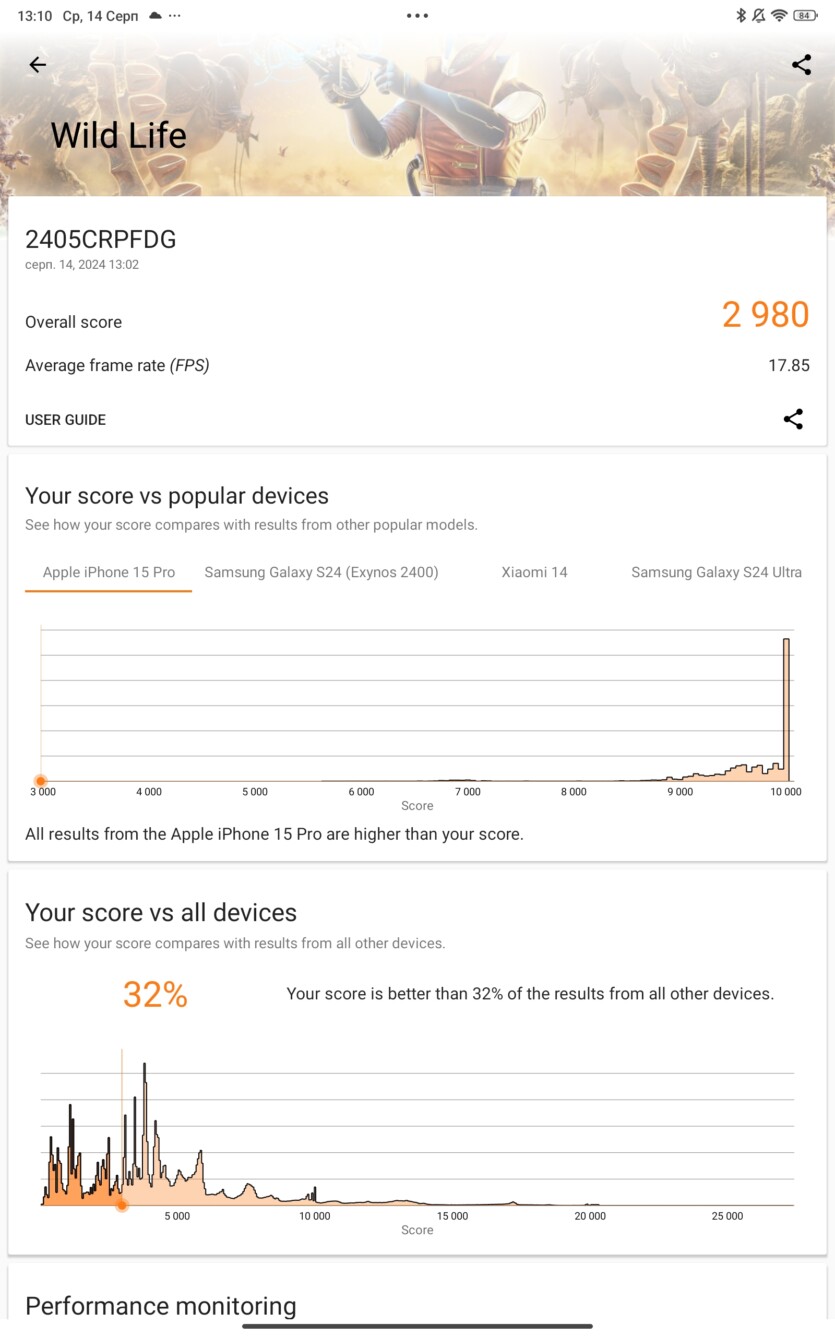
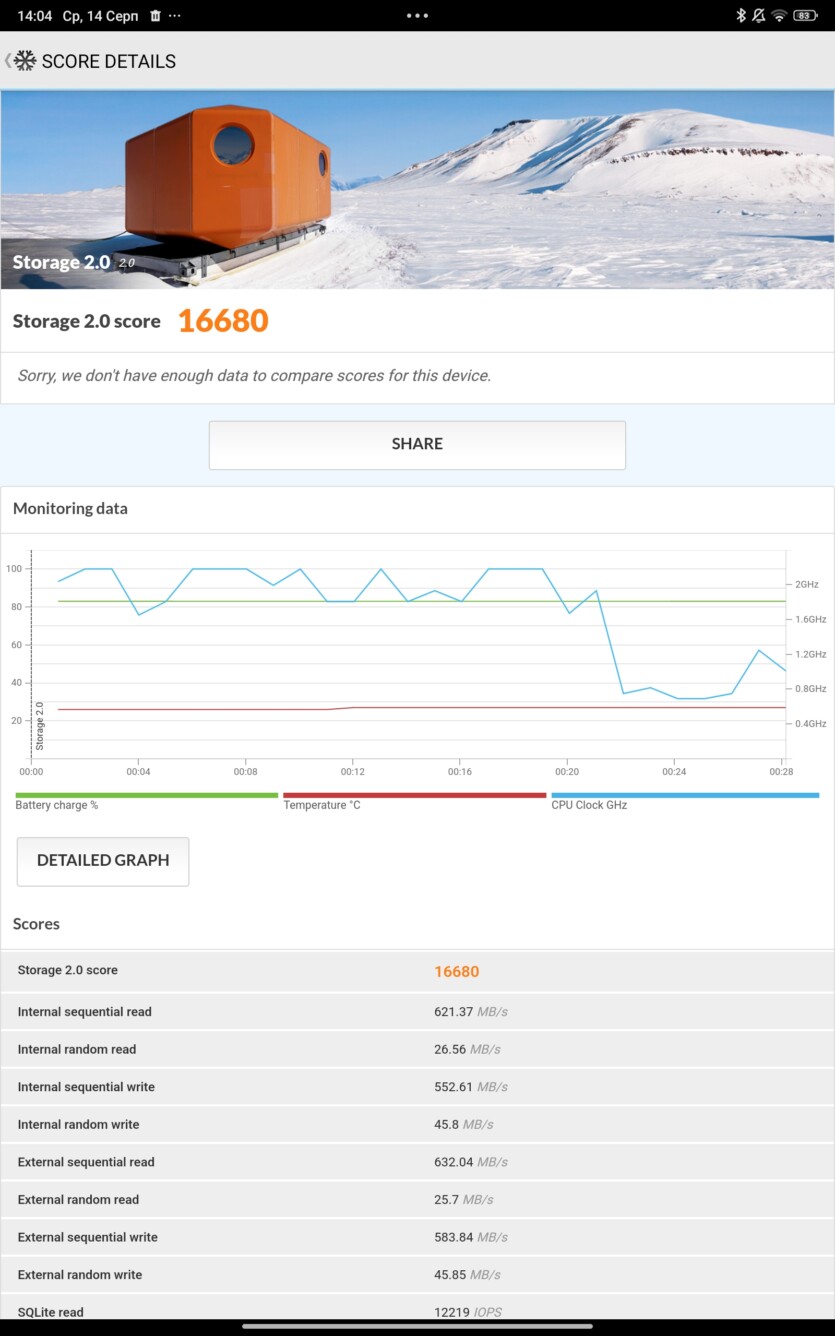
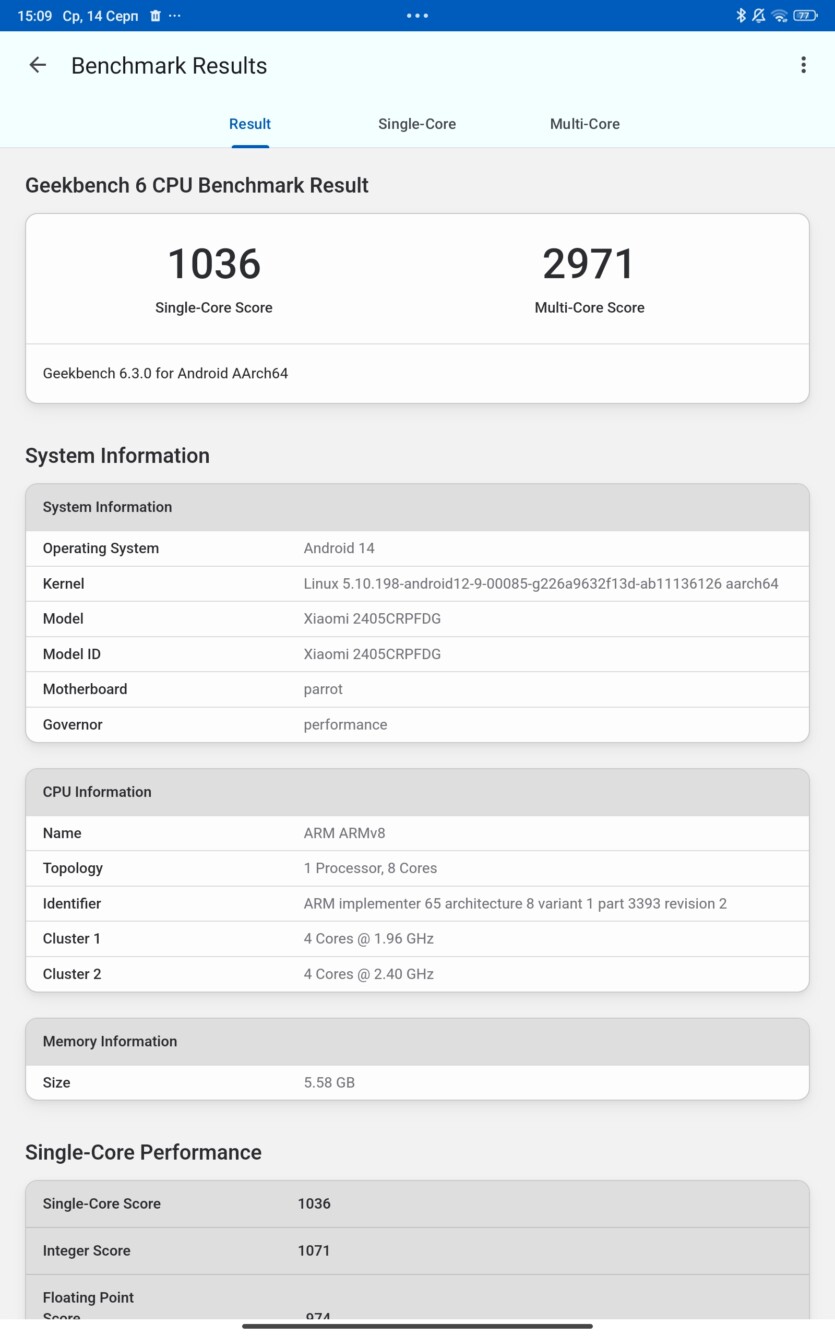
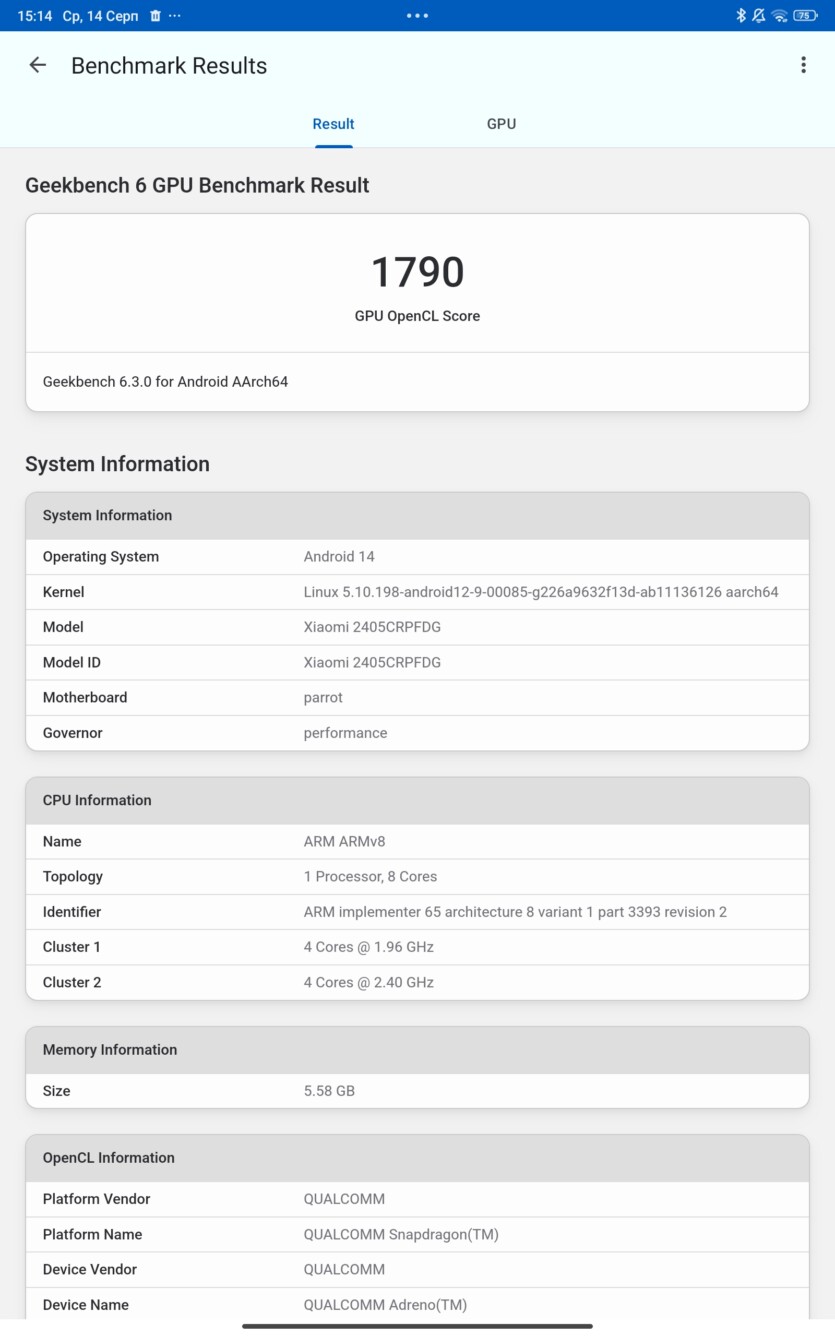
On the tablet, you can easily play most popular games like Wild Rift, COD Mobile, COD Warzone, etc. at high-maximum graphics settings with a pleasant frame rate. But it’s better to connect a gamepad to it because it’s not 10 inches anymore. So it’s physically difficult to play on a 12-inch screen with your fingers because sometimes they just don’t reach the right places, and over time, your hands get tired of holding such a thing. So you either put it on the table and adjust the buttons yourself, or use a gamepad.
Redmi Pad Pro runs on Android 14 with Xiaomi’s proprietary HyperOS shell. I have already talked about it in detail in reviews of other Xiaomi and Redmi smartphones. Let me remind you that I like it visually, and there are a lot of customizable appearance settings. But along with this, a lot of negativity is caused by advertising and a lot of pre-installed applications. There are also a lot of system programs, but most of them are still useful to the user.
As I said above, the system works quickly and efficiently. In this mid-range segment, I did not expect anything else, especially from HyperOS and an adequate processor. They have several nuances, which I also mentioned above, but together they have a powerful performance and no complaints about the usability of the hardware and its optimization.
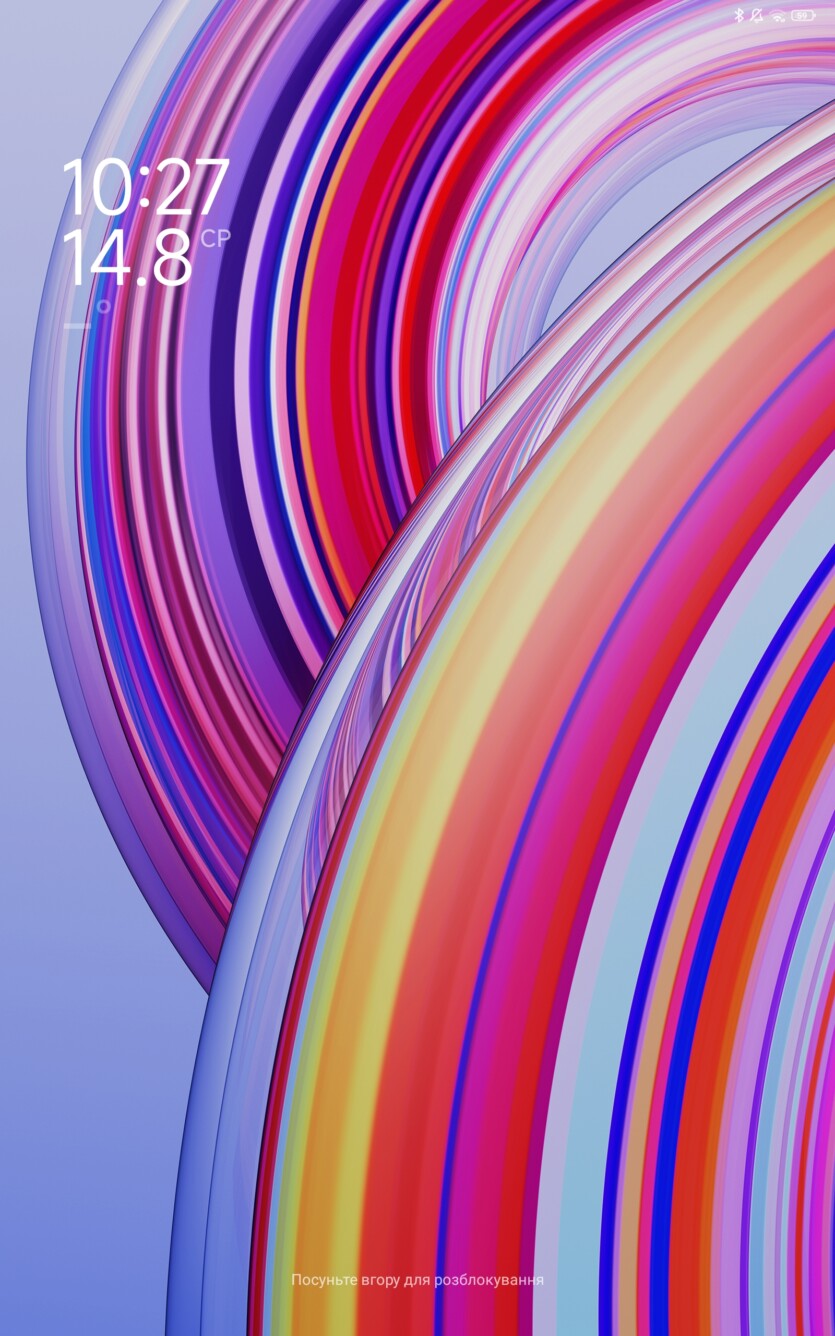
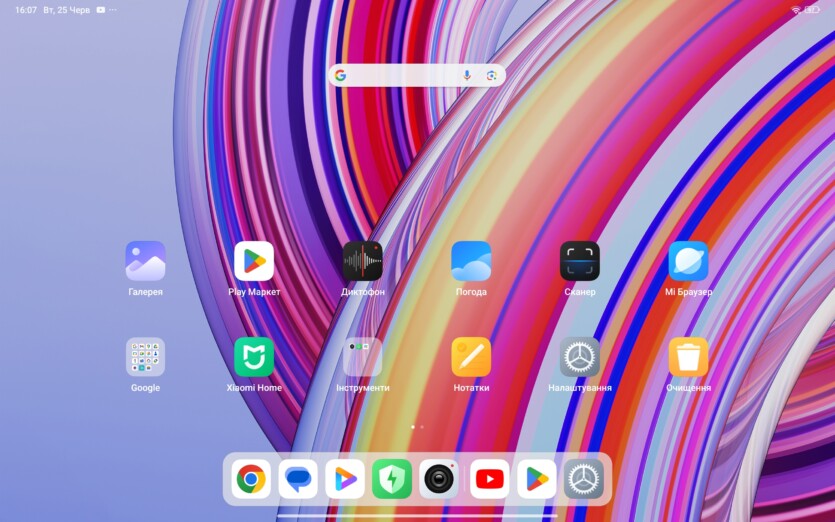

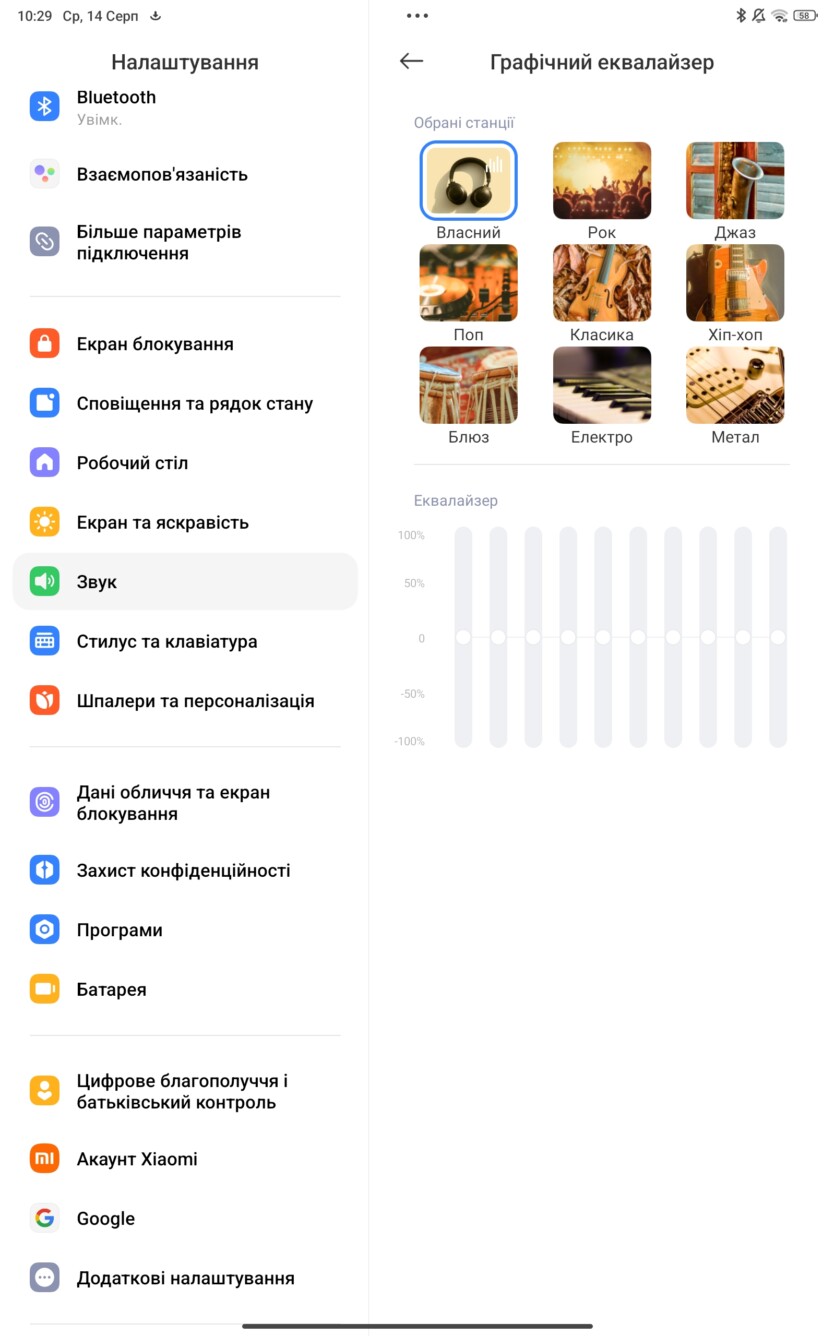

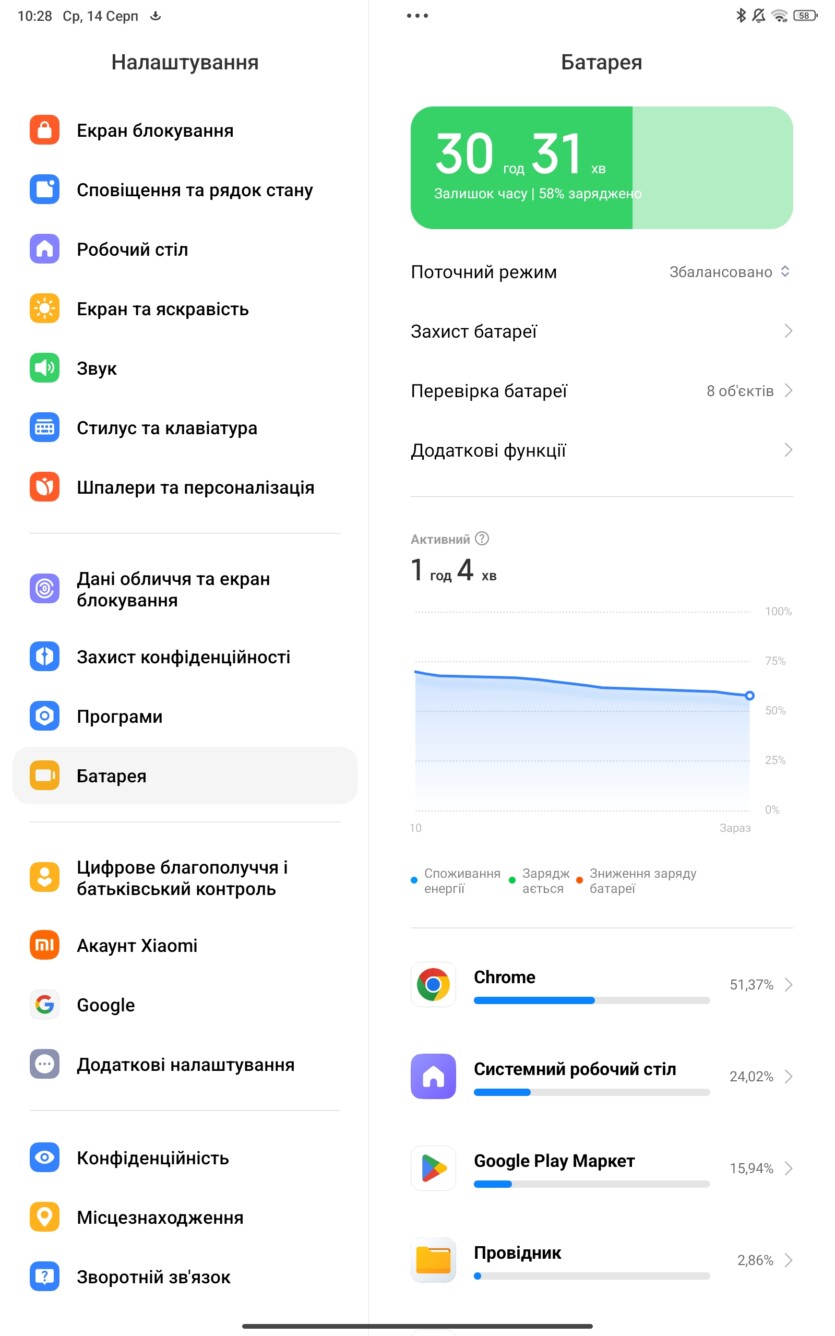
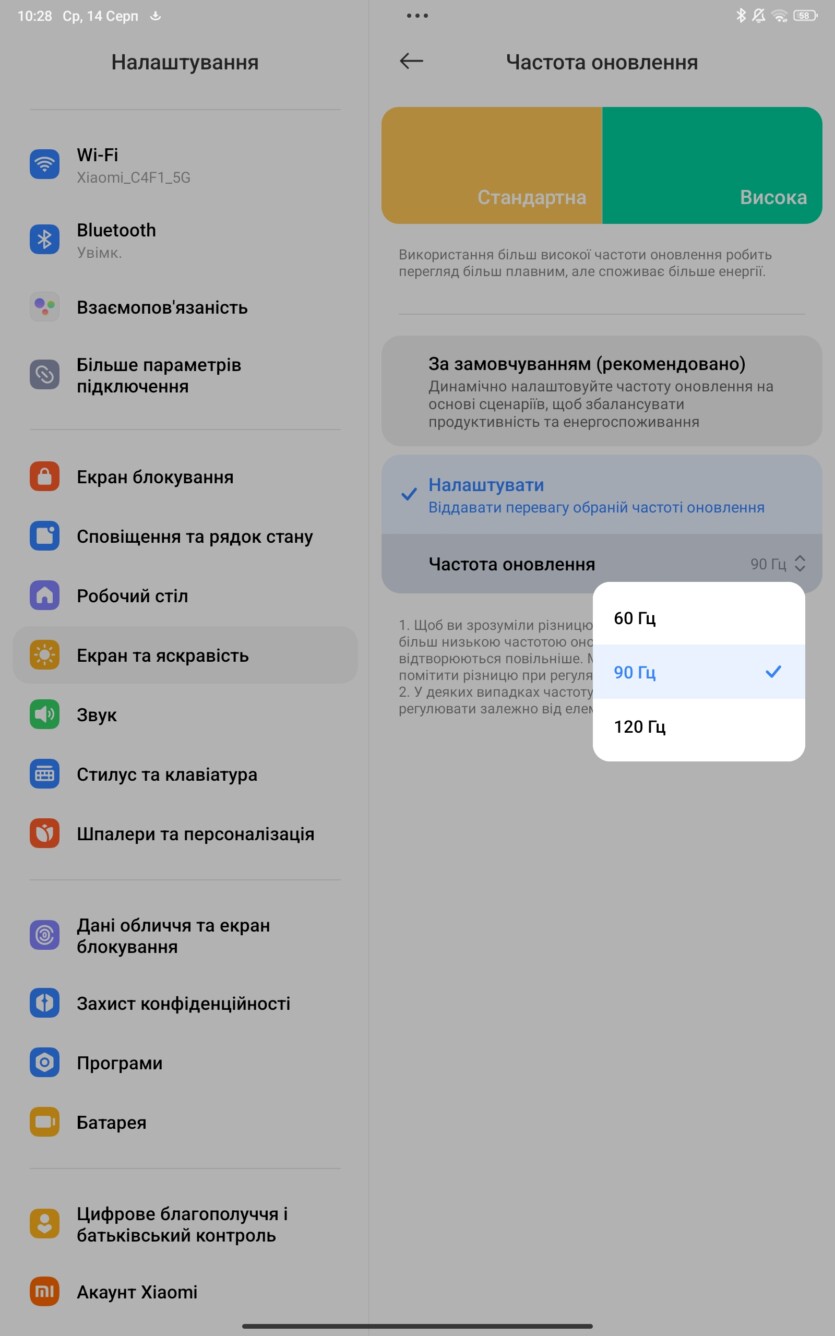
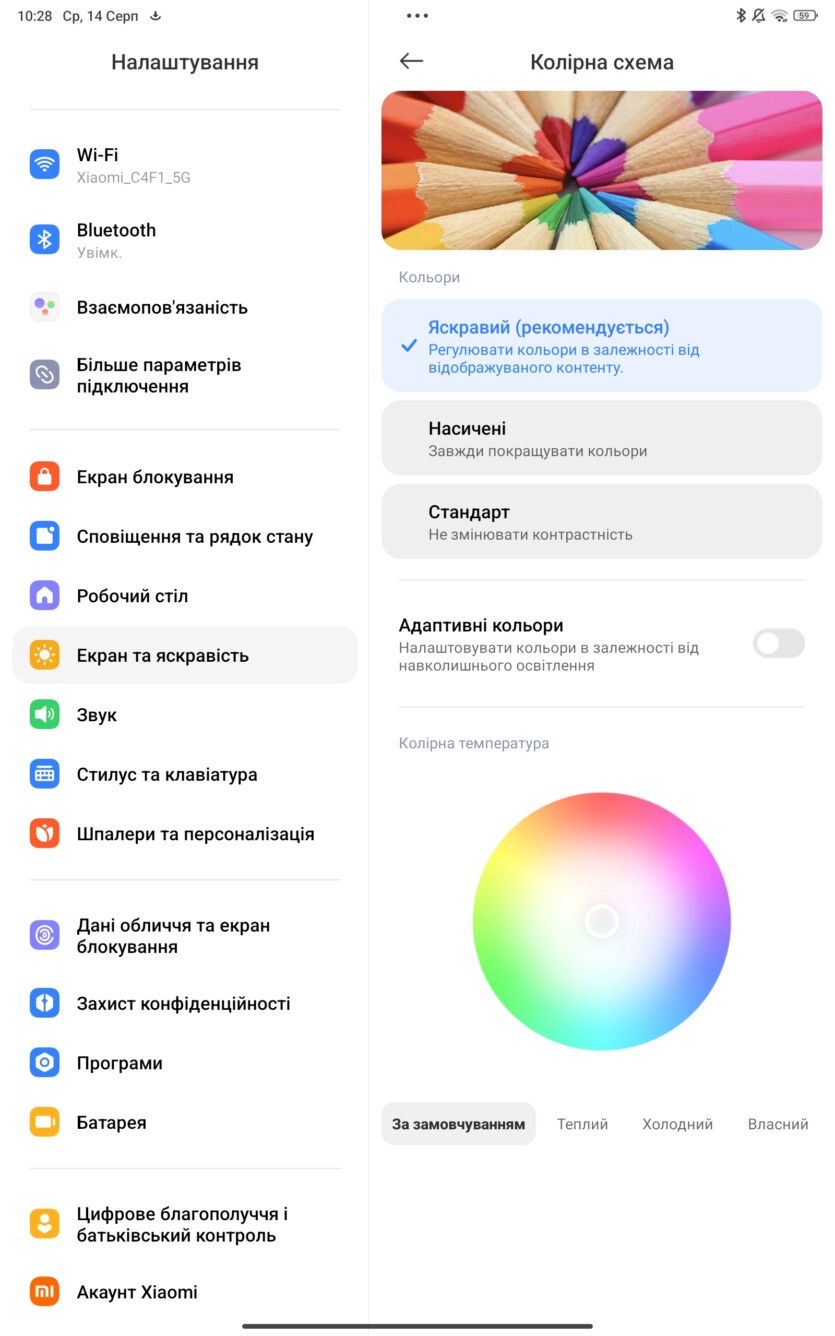
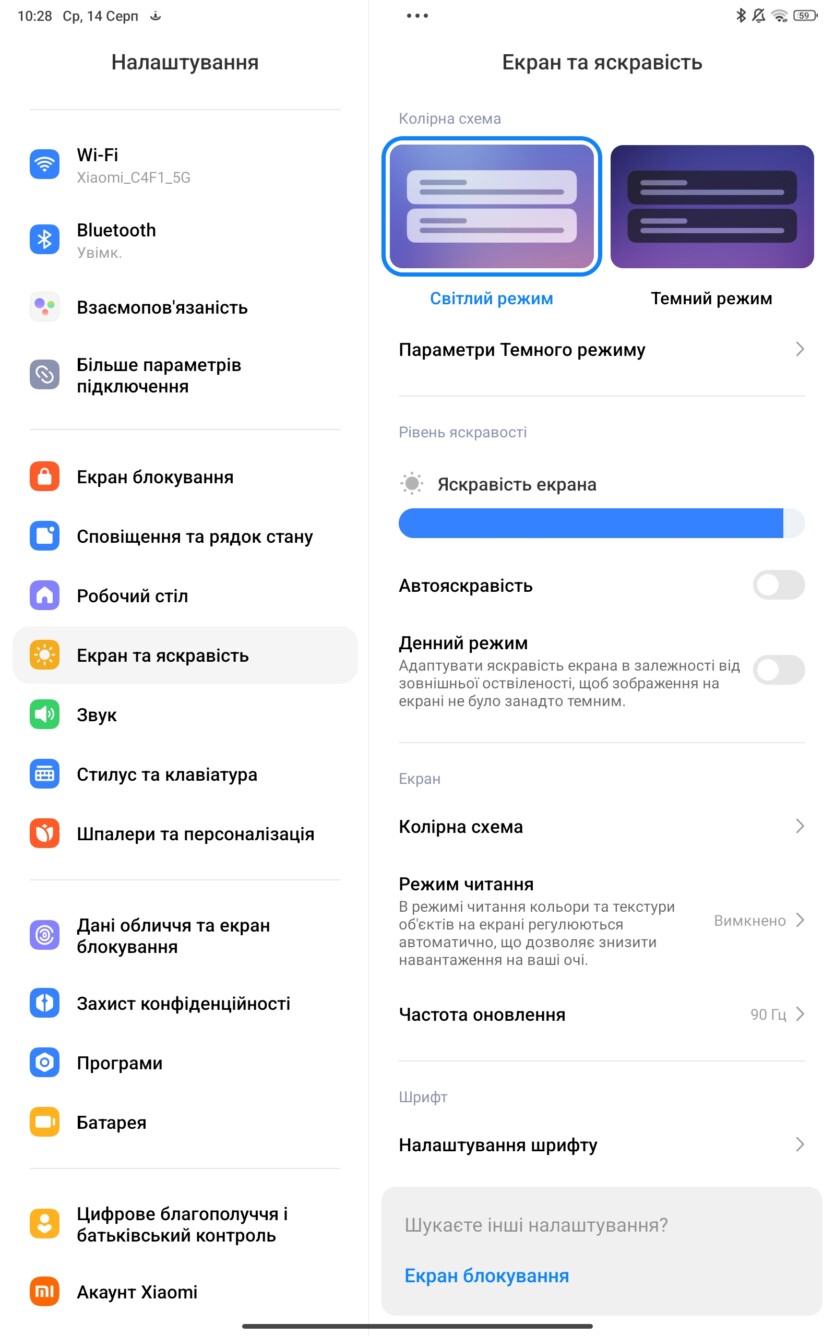
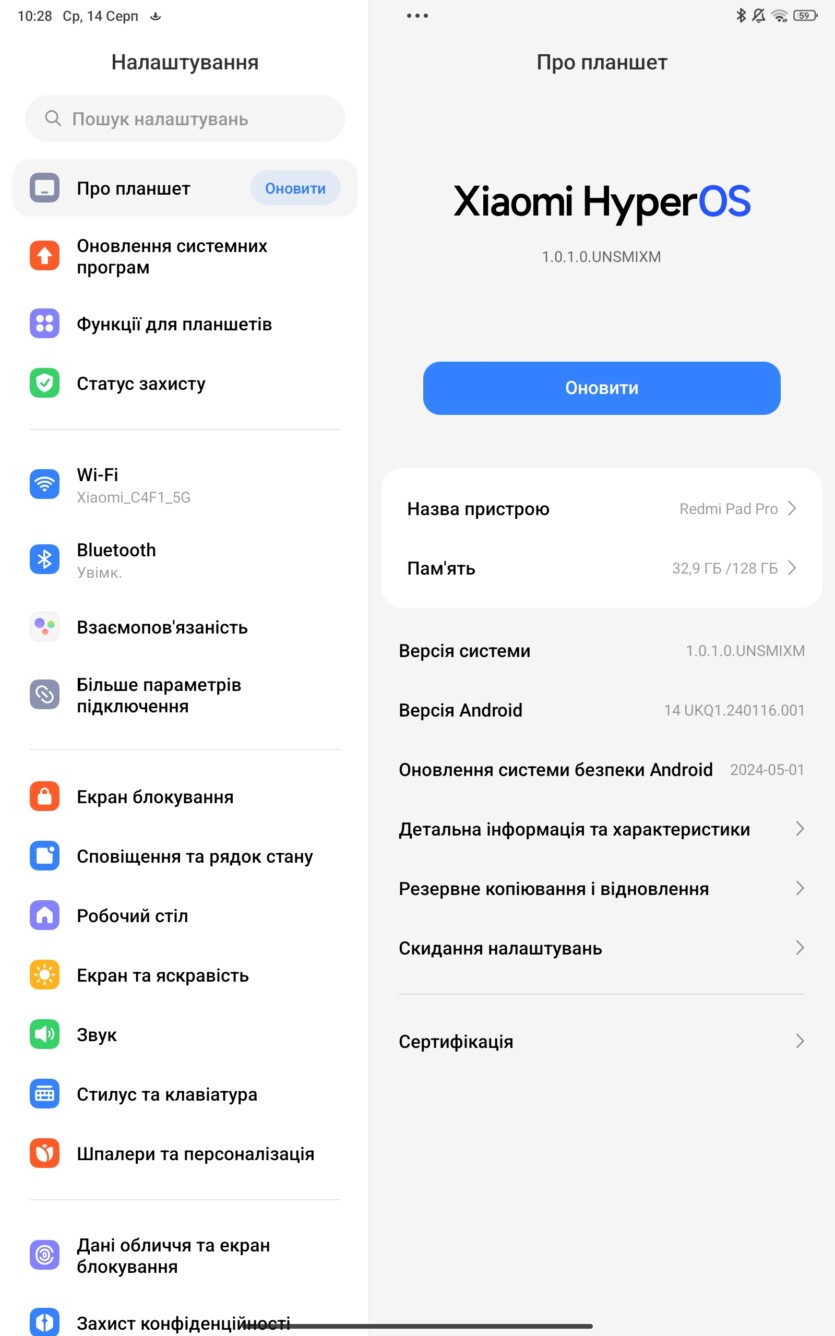
Sound and camera
Redmi Pad Pro is equipped with four speakers with Dolby Atmos and Hi-Res support. That is, we have loud and relatively voluminous high-quality stereo sound and even some hints of bass. There are also two microphones with noise-canceling function. They pick up voice well and muffle ambient sounds normally.
You can study and talk with colleagues through the tablet, you will hear them well, as they will hear you, but the surrounding noise will hardly reach them, although, as always, it will slightly roboticize and muffle your voice.
Redmi Pad Pro has a main and a front camera of 8 megapixels each. Both have a portrait mode and various beautifiers, and can shoot video in 1080p at 30 fps. There is also digital stabilization.
The cameras are just fine. They’re a kind of base for tablets. You can’t take good photos or record high-quality videos with them, but they’re not a shame to use them to communicate with colleagues, take pictures of something you need, documents, etc.
It is claimed that the camera can take high-quality pictures in low light, but this is not actually confirmed. Although if you remember that this is a tablet, it’s okay.


Redmi Pad Pro autonomy
The new tablet is equipped with a 10,000 mAh battery. It supports Quick Charge 3.0 and Power Delivery 3.0 fast charging technologies. The charging power is 33 W. It is claimed to have 14 hours of video playback and 56 days of standby time.
The battery test in PC Mark crashed several times, so it was not possible to do it. In general, I can say that with standard consumption with the Internet, watching YouTube, some work on the tablet and reading, it lasted me for two full days.
Also, the tablet really holds a charge in standby mode. It was not possible to test this for 56 days, but it definitely lasts a week in this state and almost never runs out of power. That is, I left it on for a few days or more, and when I activated the screen, it worked, and the battery was literally 3-5% discharged. This is very convenient if you need to use it quickly and then leave it on again for a while. Not all tablets can do this.
Experience of use
At first, I didn’t expect anything special from the Redmi Pad Pro. Yes, I was sure that it was at least just a normal model that would probably sell well, like many other products from this brand. I was also not happy that it didn’t come with a power supply. Yes, it’s a trend now, but in my opinion, it won’t make a potential buyer feel better. It’s also not usual for Redmi that there is no screen protector.
During the first review, I appreciated the thin and metal body, which is not very expected in the middle price category. I also really liked the screen. As I said, at first I thought it was AMOLED because it was so bright and with rich colors. Also, there is good detail, but still no deep black, which is not due to the increased brightness of AMOLED matrices, but for the IPS segment, the display is incredible.
I also liked the loud and sufficiently surround sound, and the tablet has good power, so it works quickly and easily runs any games. But as I said, my hands got tired quickly during games, so I put it on the table, but ideally use a gamepad and put the tablet on a stand.
I like that Redmi Pad Pro has a full-fledged multifunctional stylus and a stylish, comfortable keyboard case. But I don’t like the fact that you have to buy them separately. Another plus in all this is the price. Even if you do buy it, you’ll get a multifunctional tablet for work, leisure, and multimedia for much less money than a similar set from competitors.
Price and competitors
Redmi Pad Pro is sold at a price from 9629 UAH. But in large networks of the «Hello» type, its price is 9999 UAH. This is the 6/128 GB version. Of course, other versions will be pricier, but still nice. For example, the price tag for the 8/256 GB version is 11999 UAH.
We compared the new product with other 12-inch models, the mid-range segment, and Redmi Pad Pro doesn’t have many competitors in it, with only a few sane ones from Lenovo and POCO. So pay attention to Lenovo Xiaoxin Pad Pro 12.7, Lenovo Tab P12 and onPoco Pad. There are also Teclast T60 with a price tag of UAH 6200, Blackview Tab 18, as well as Oukitel OT5.

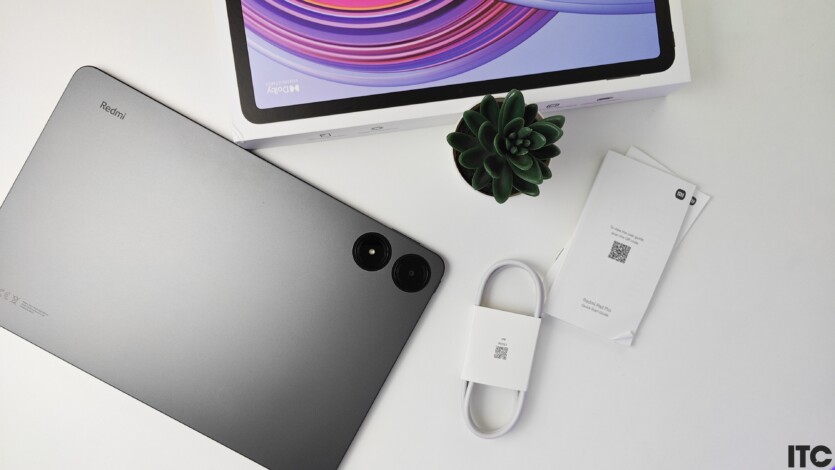

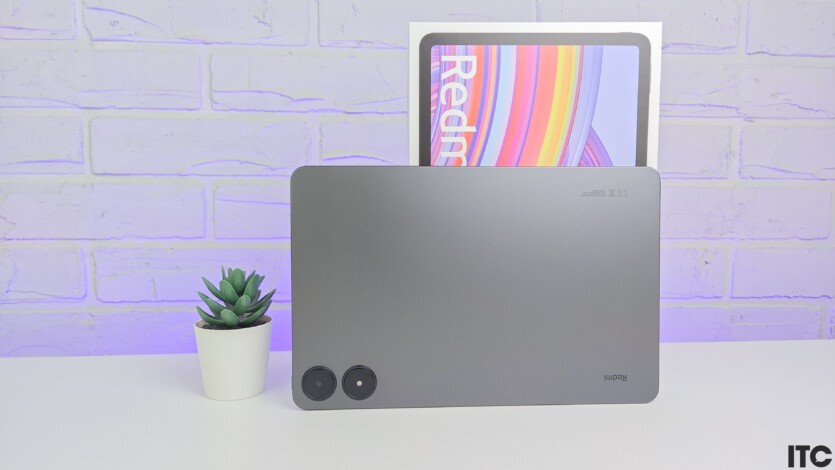
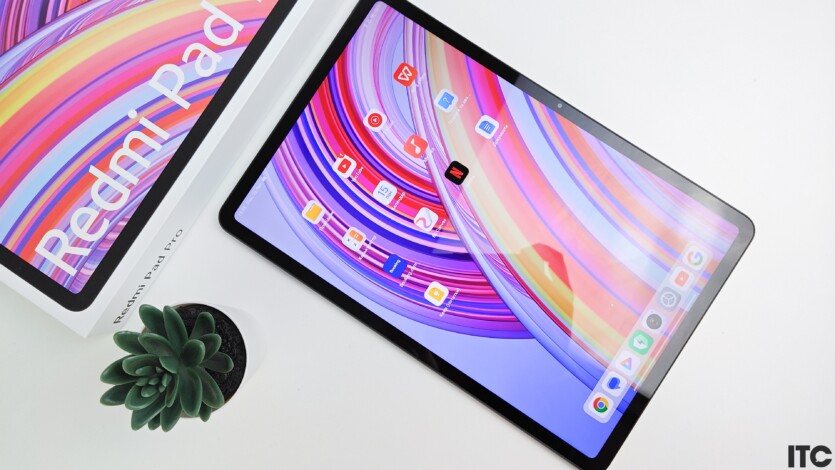
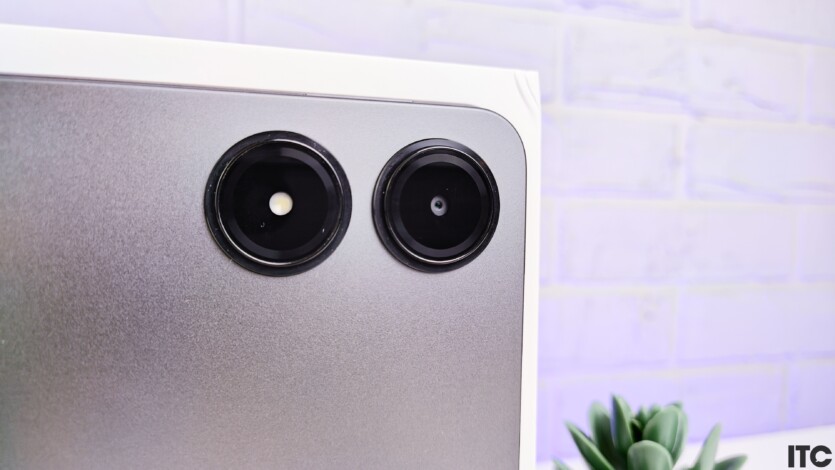



Spelling error report
The following text will be sent to our editors: